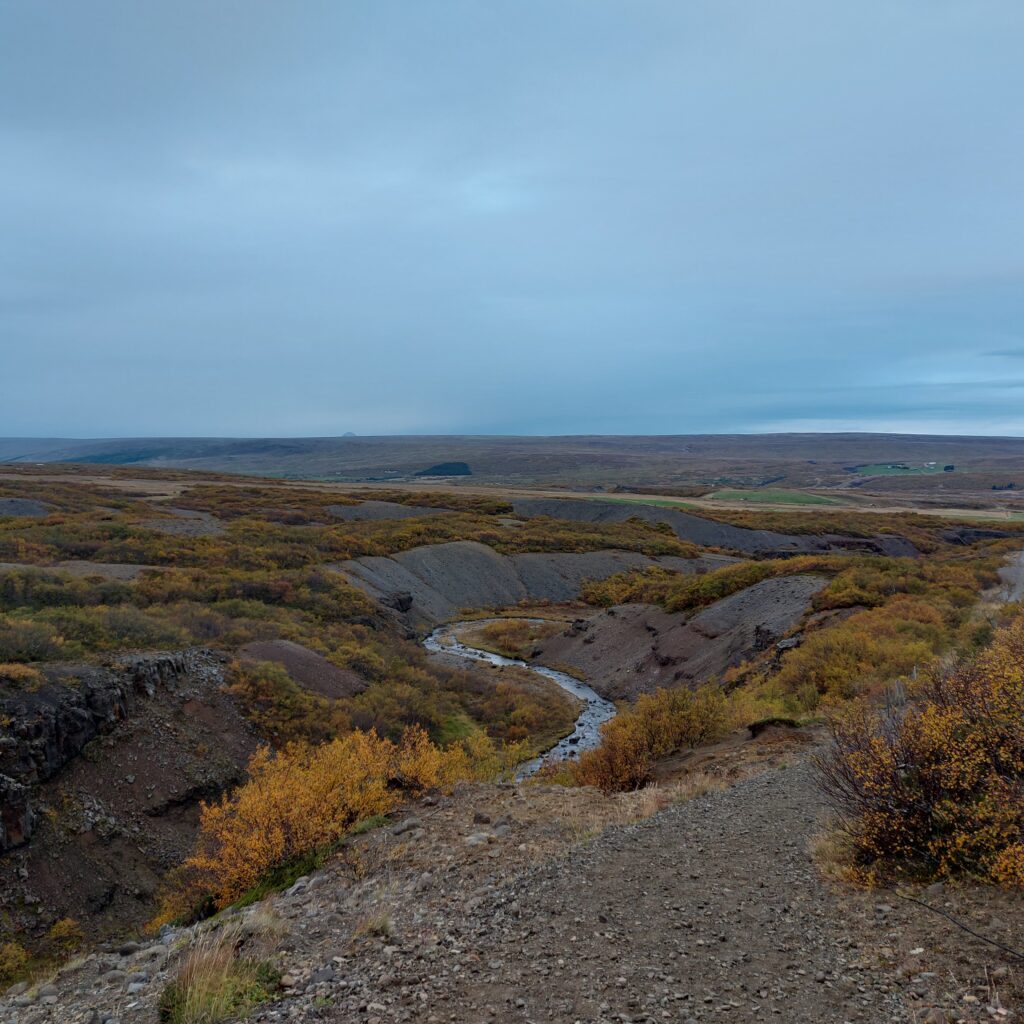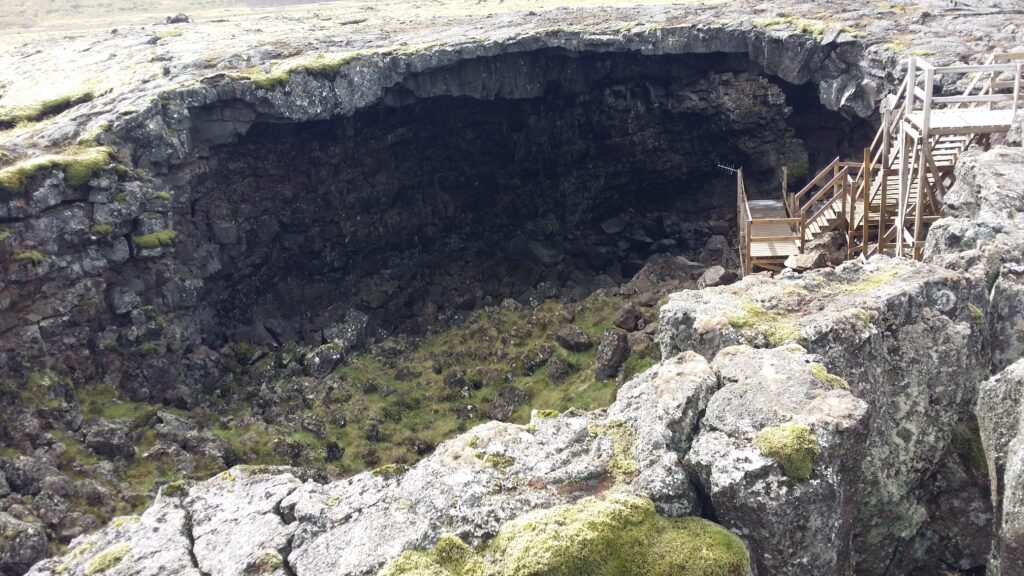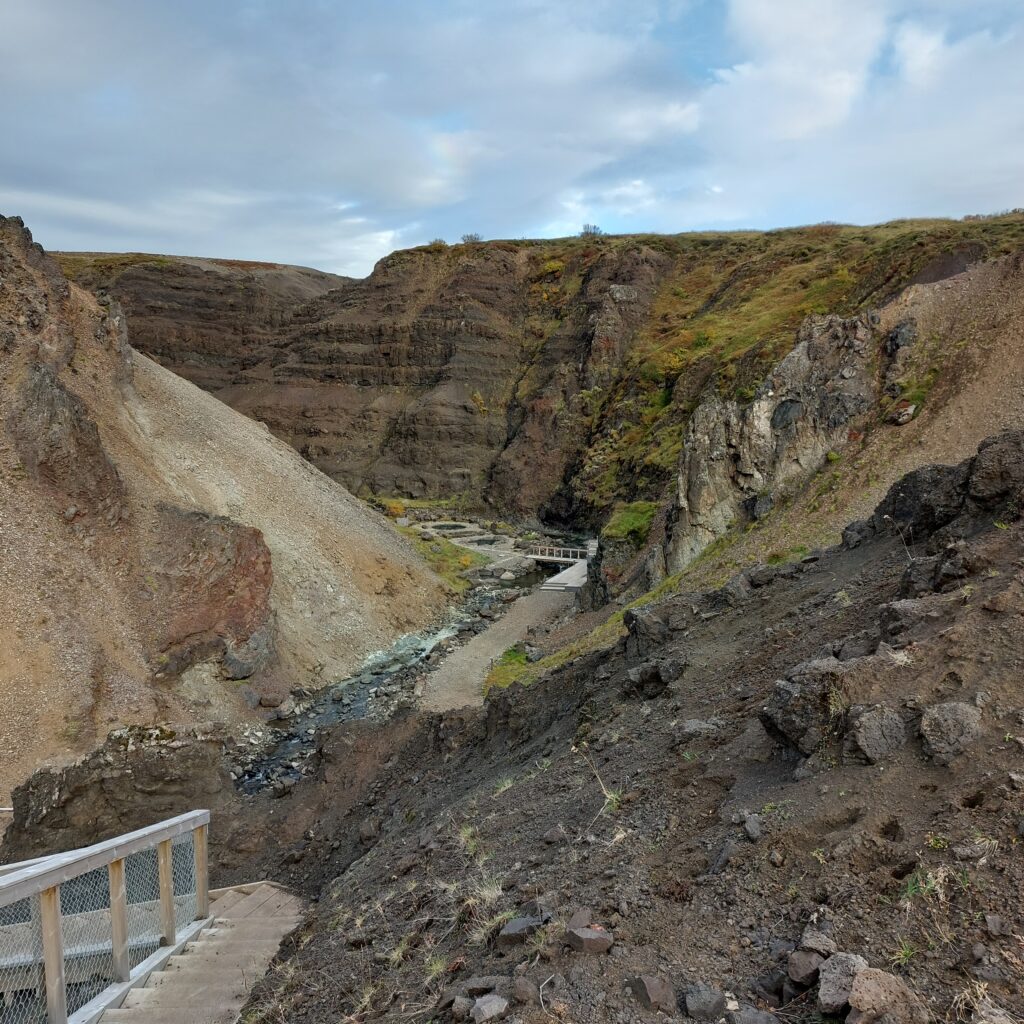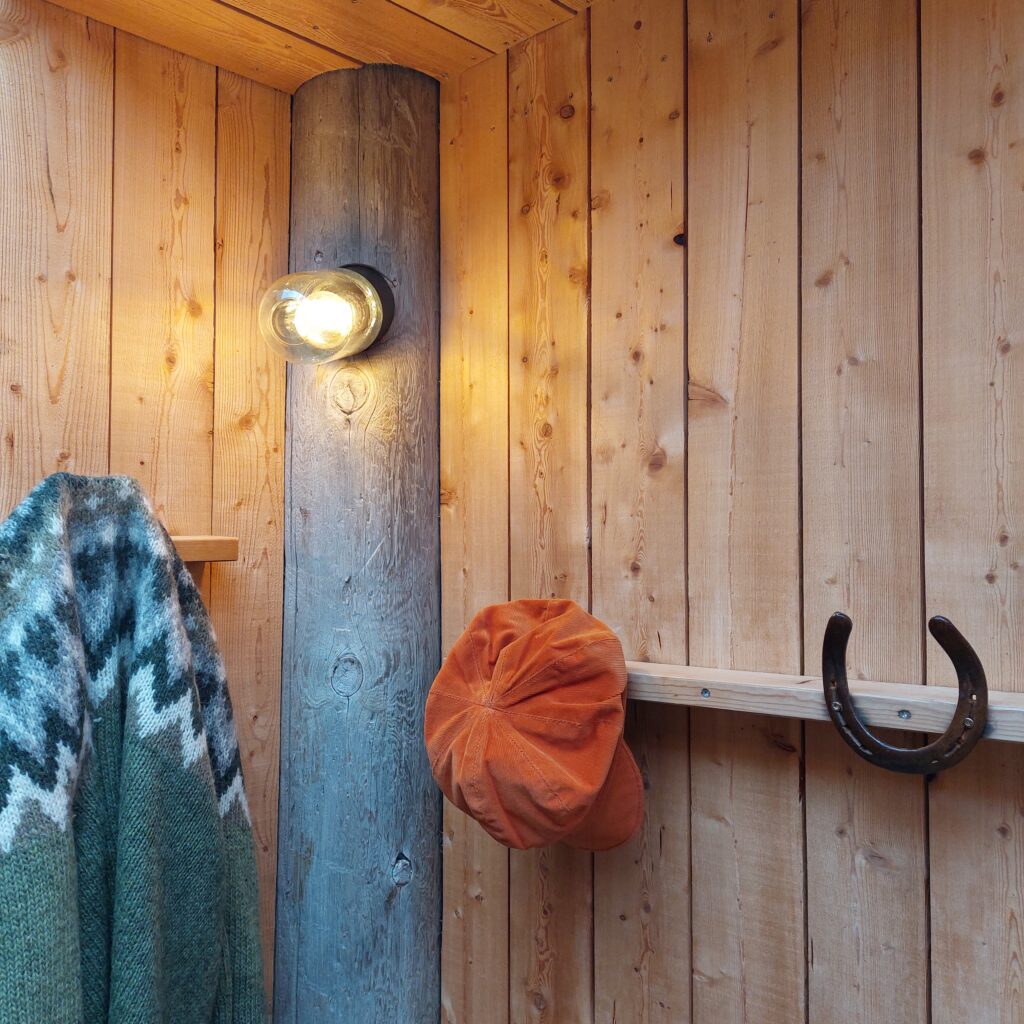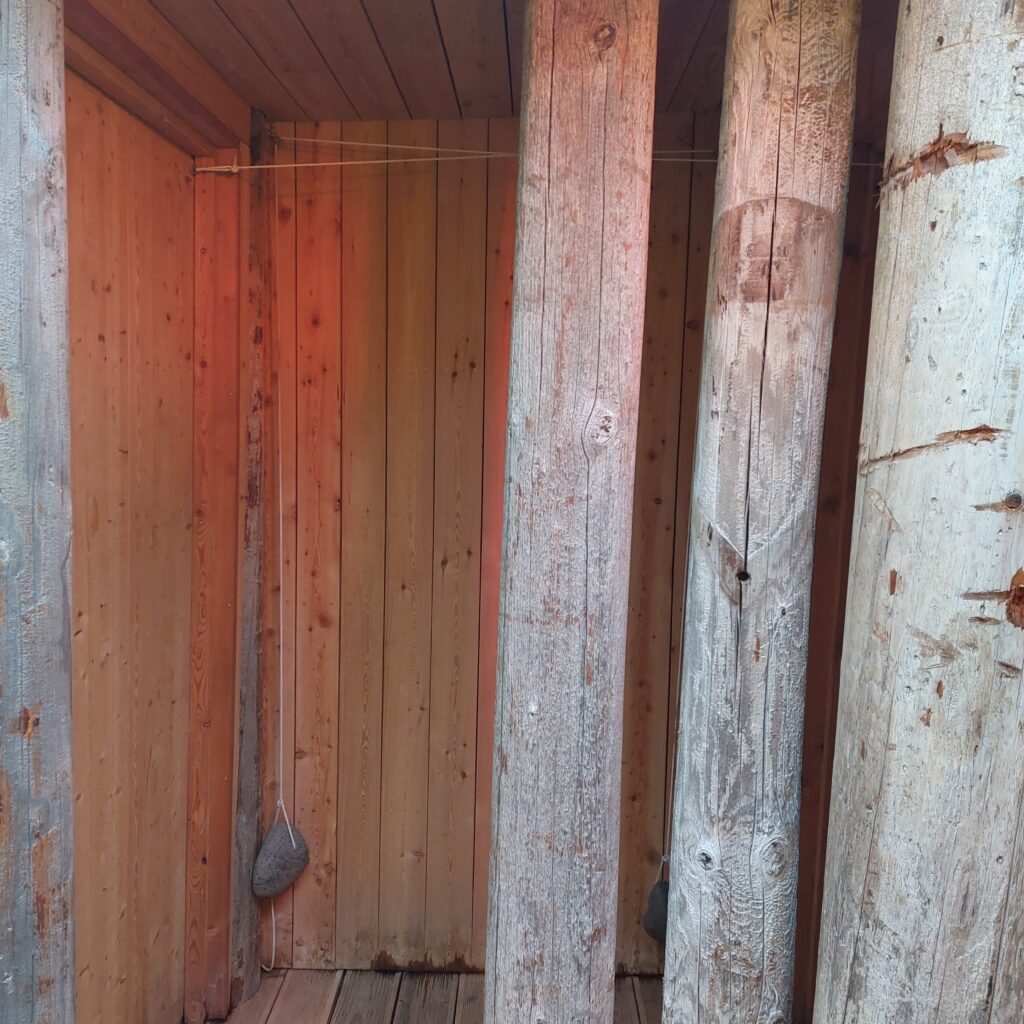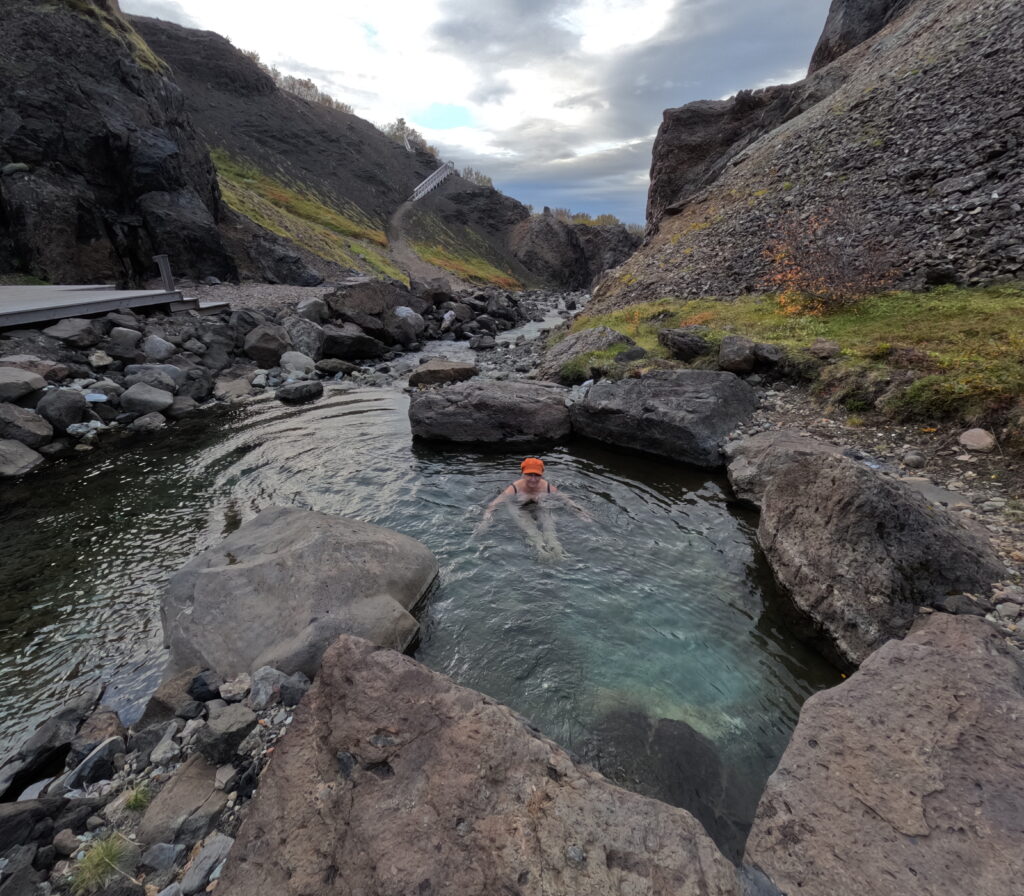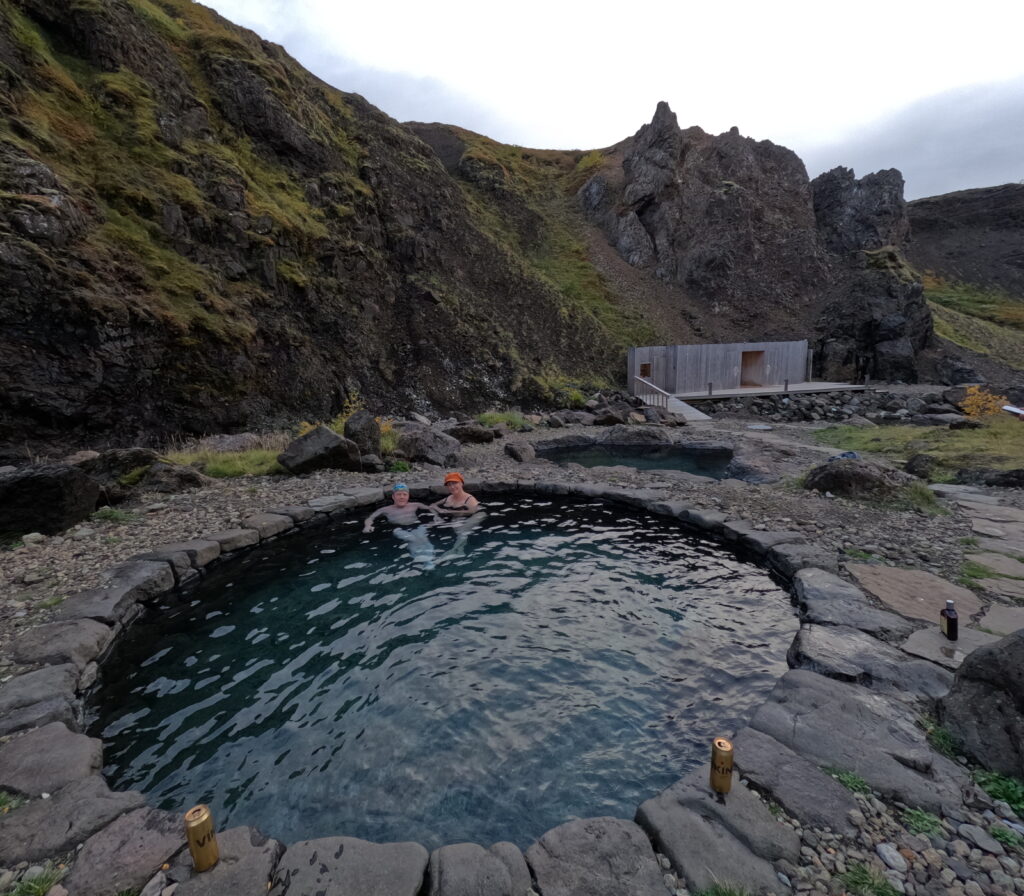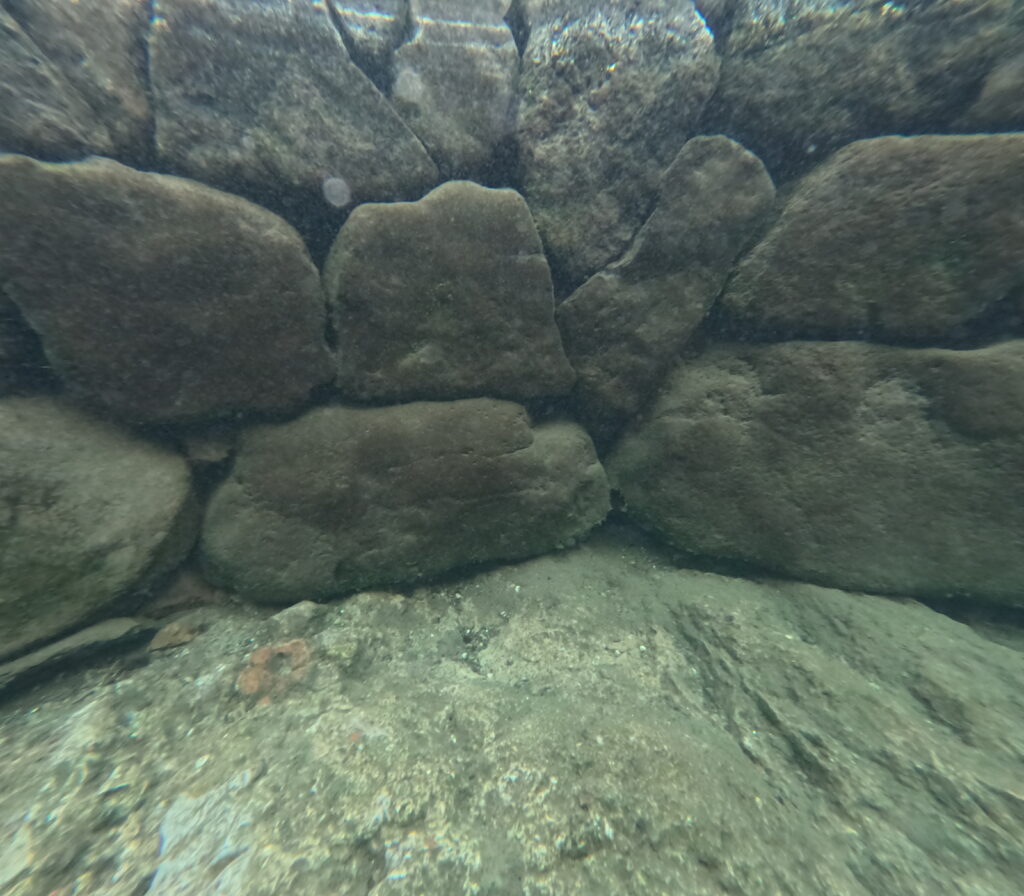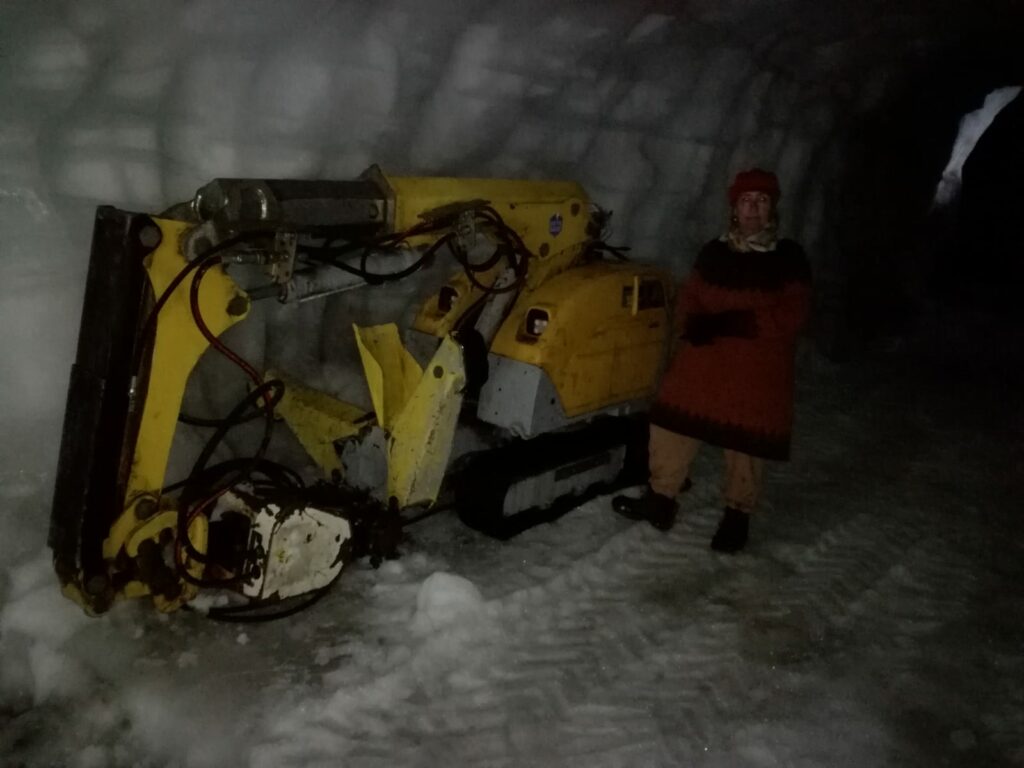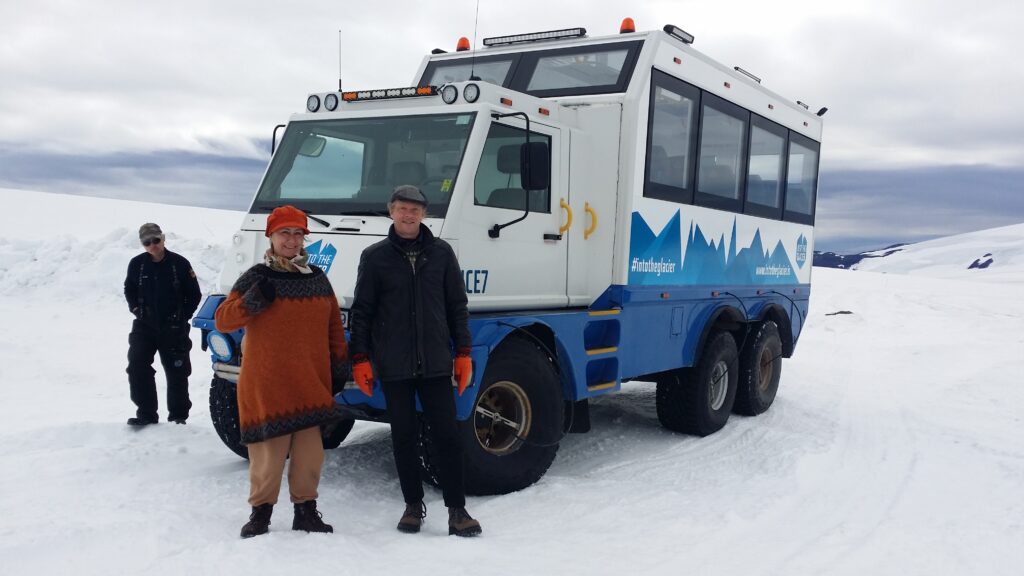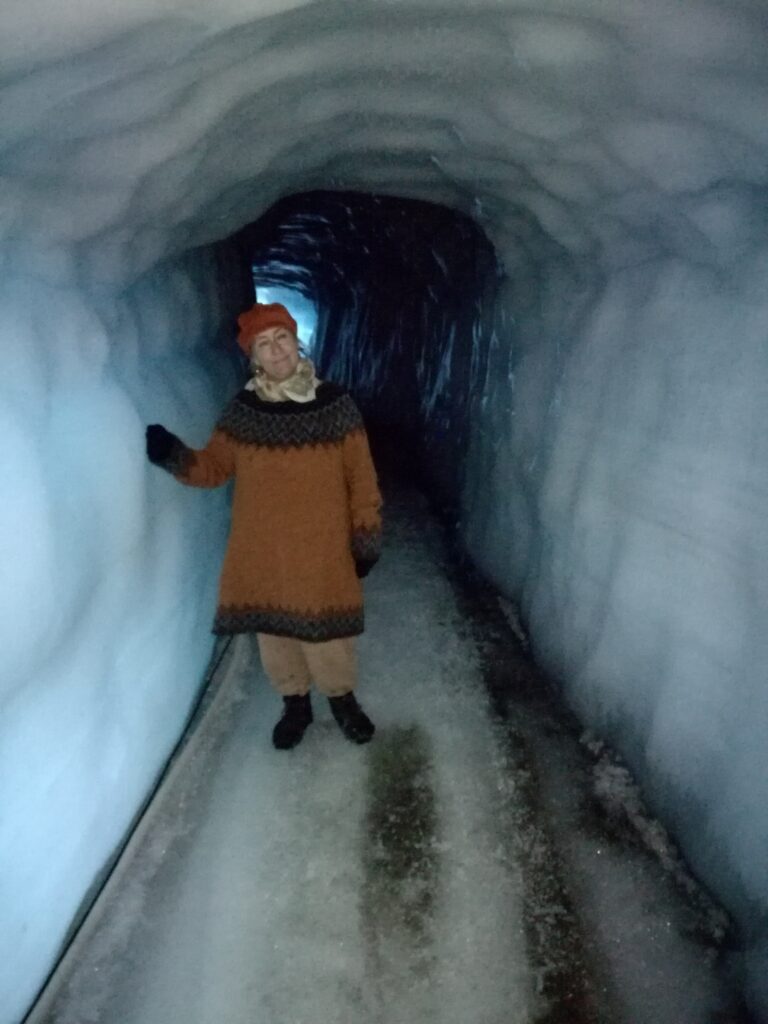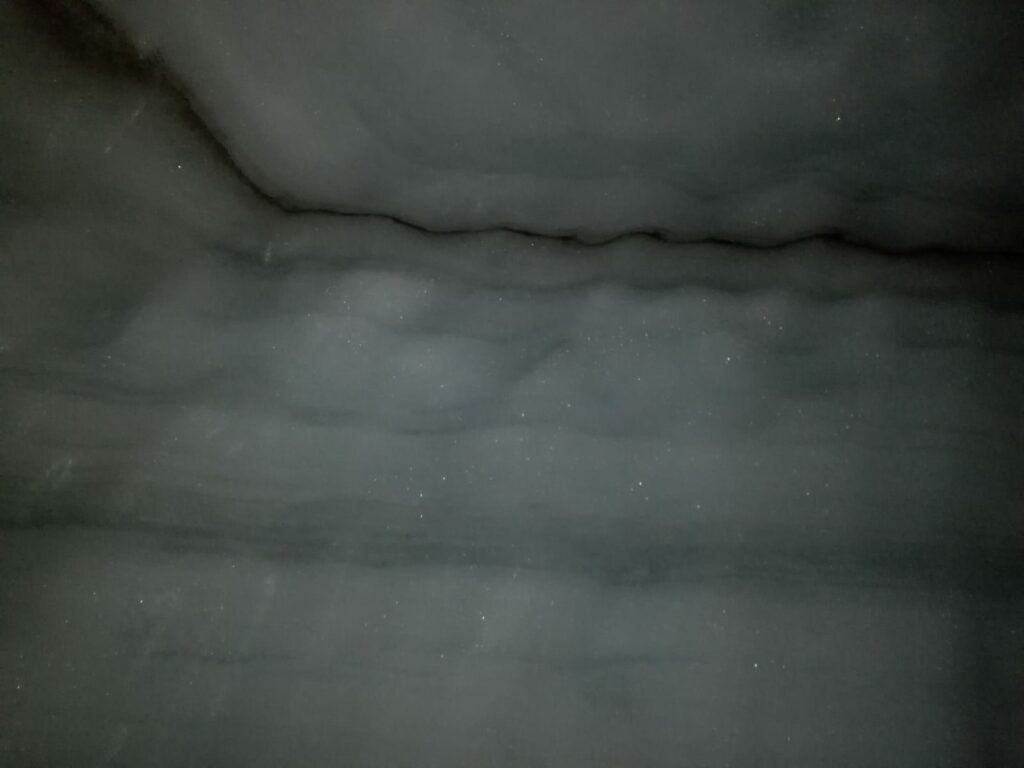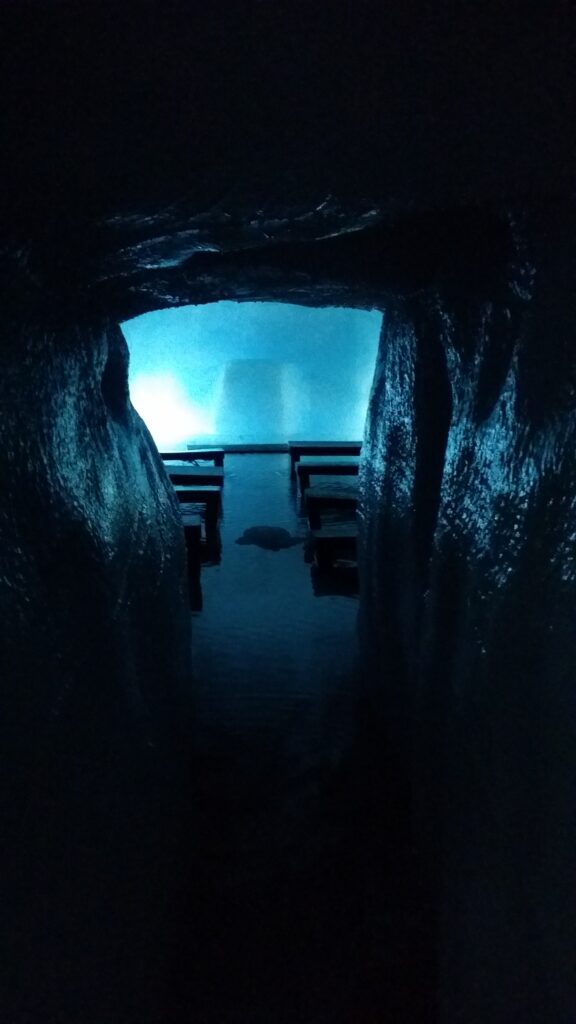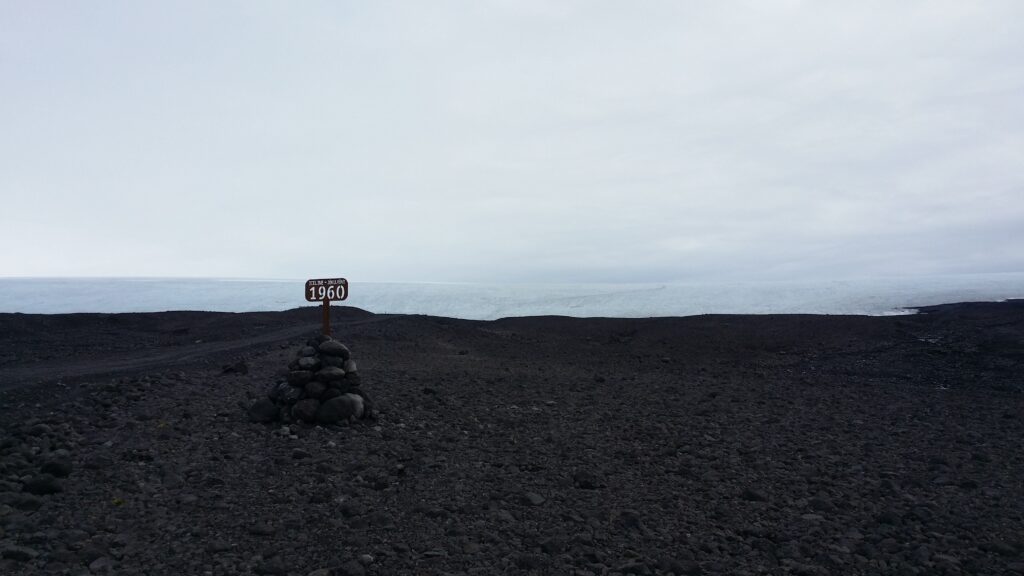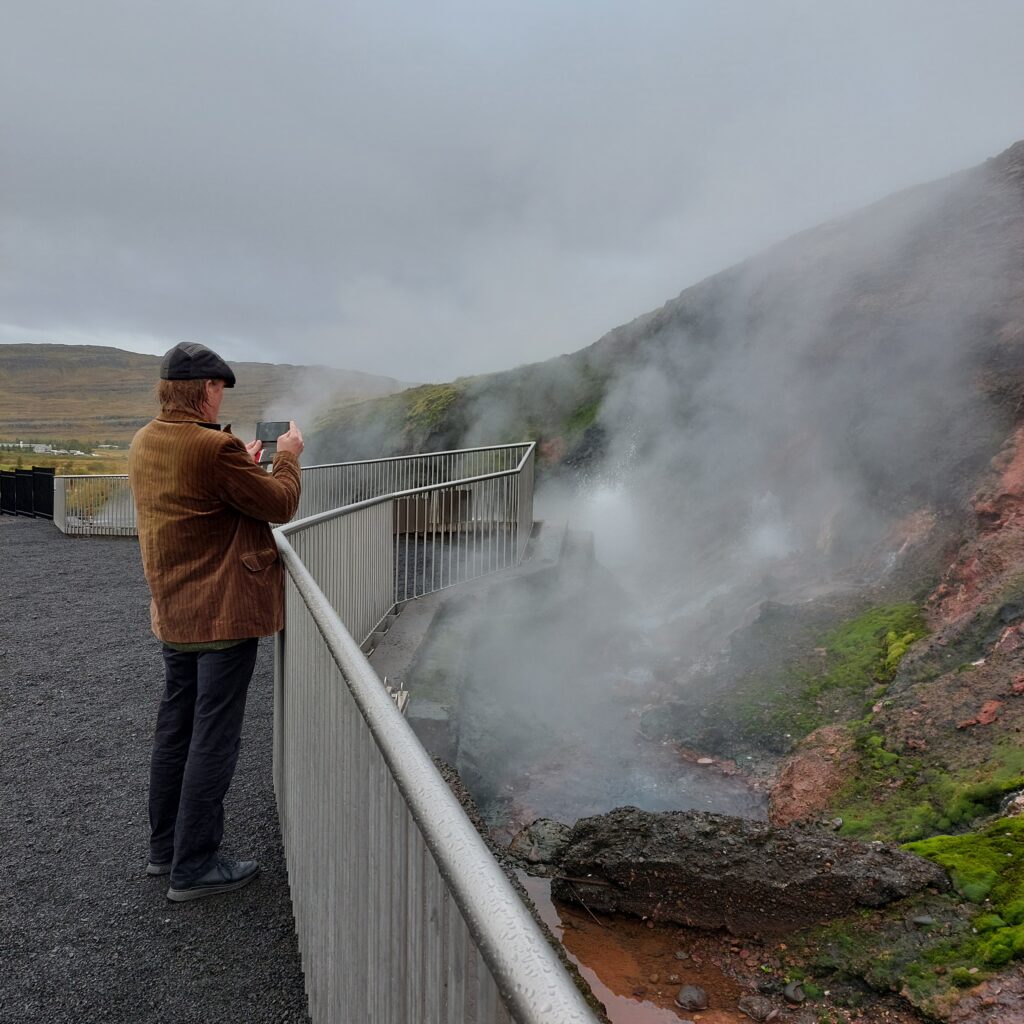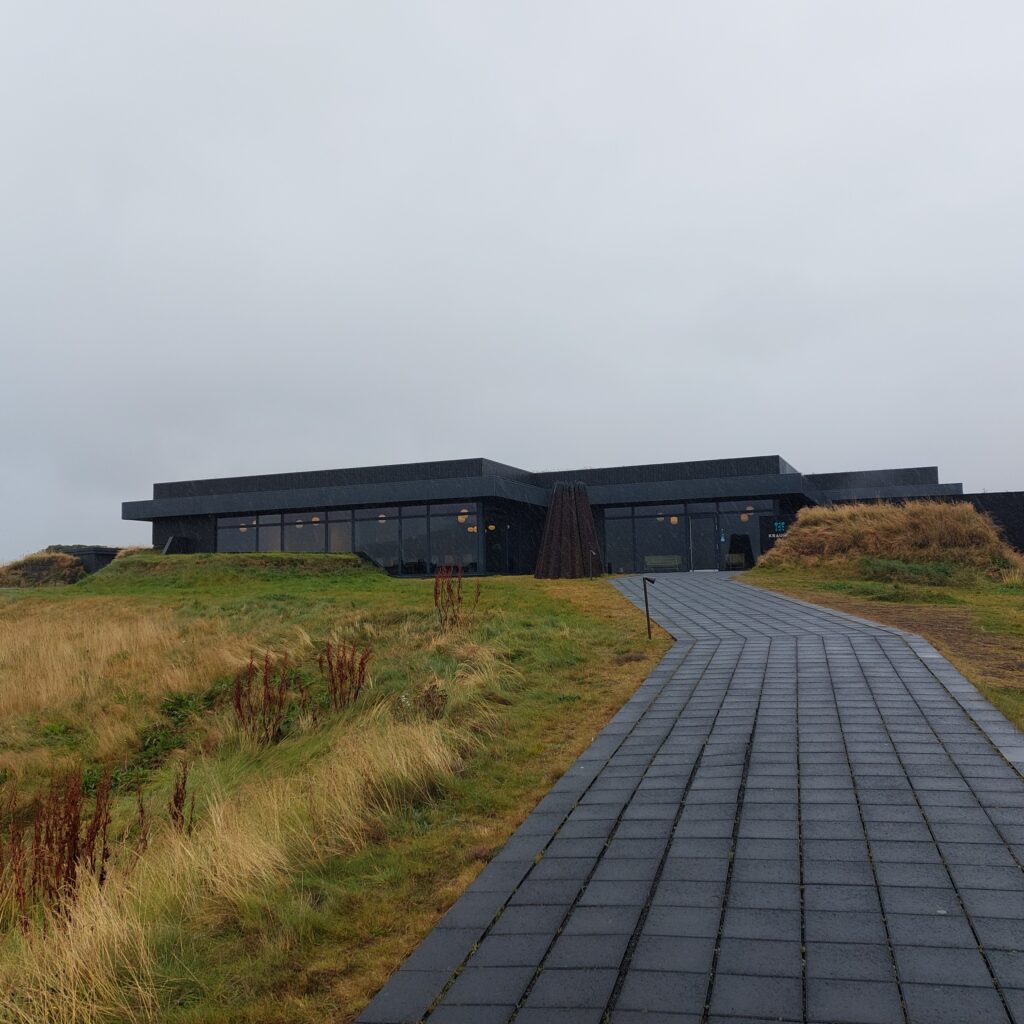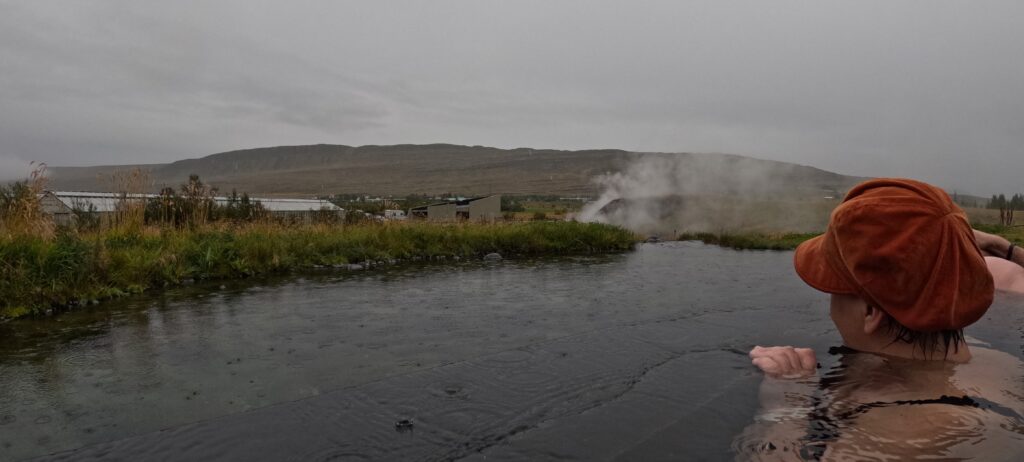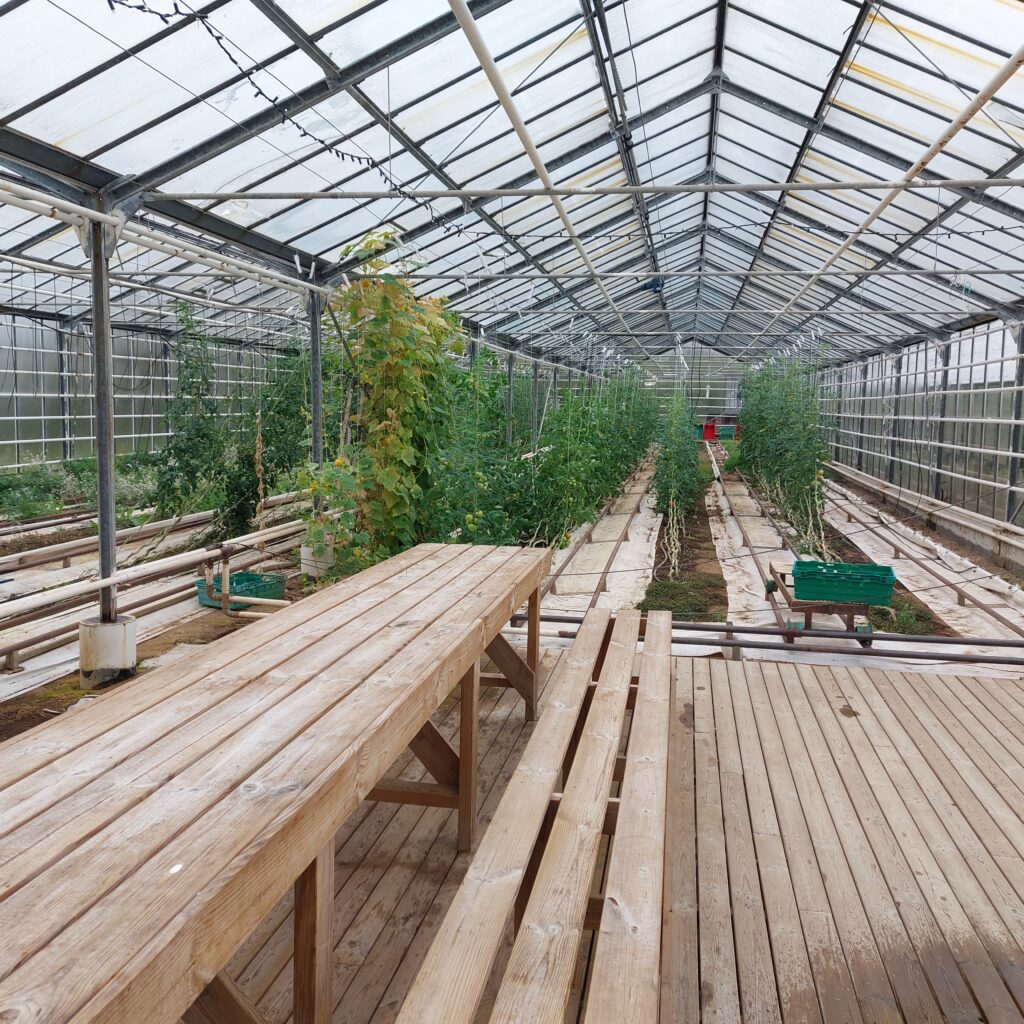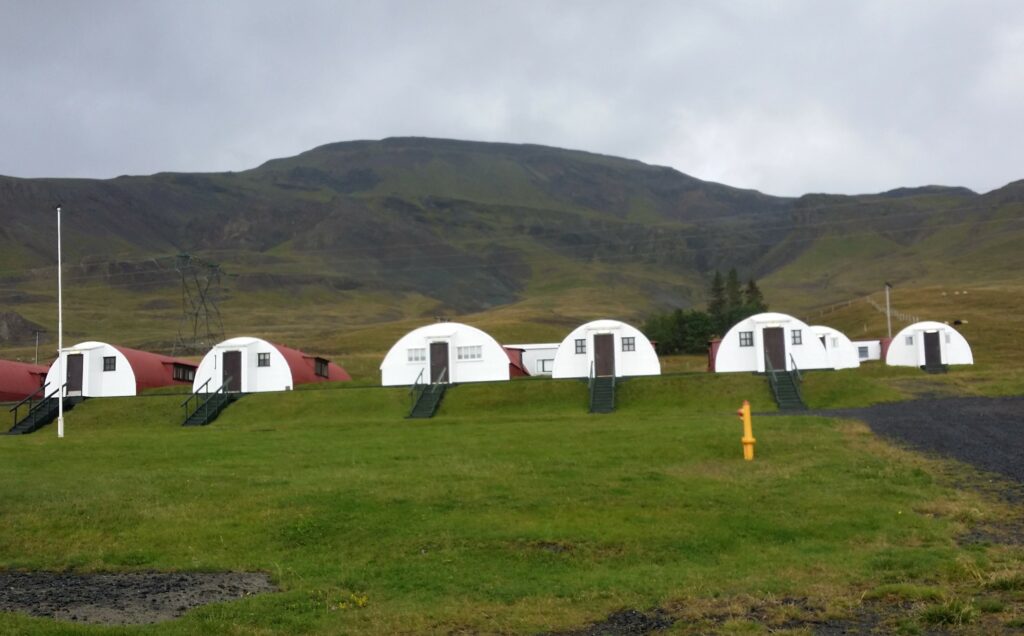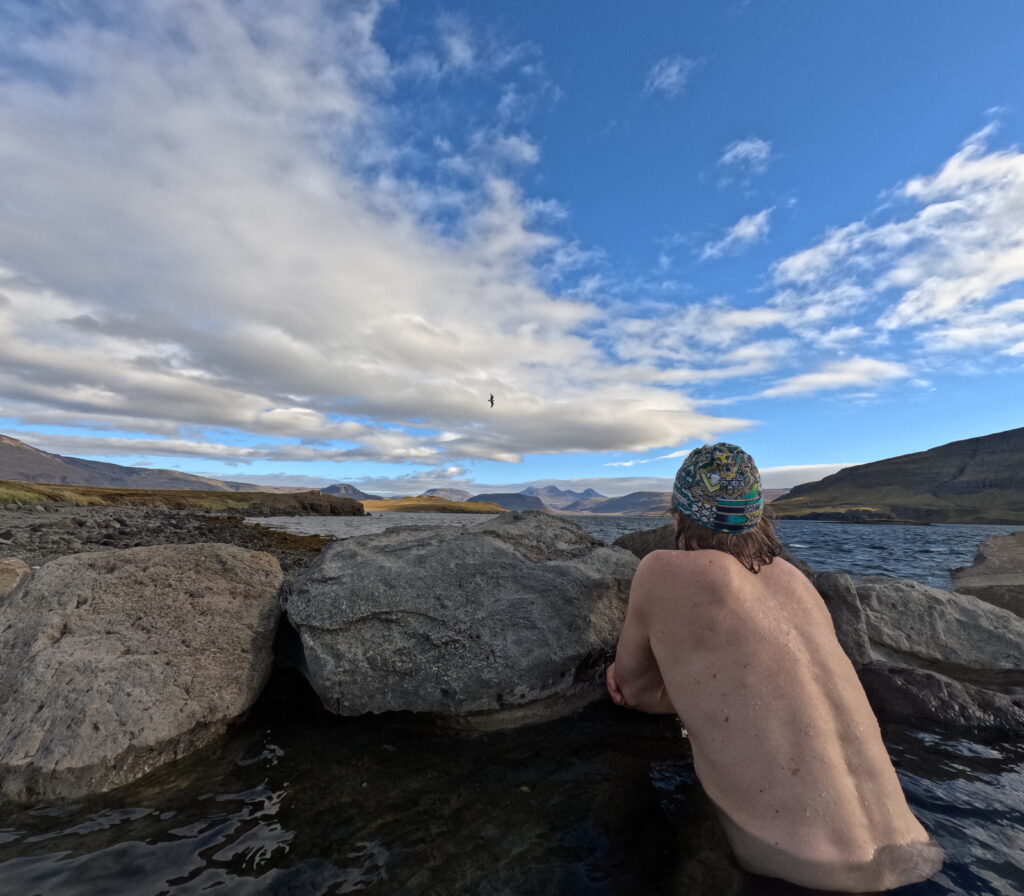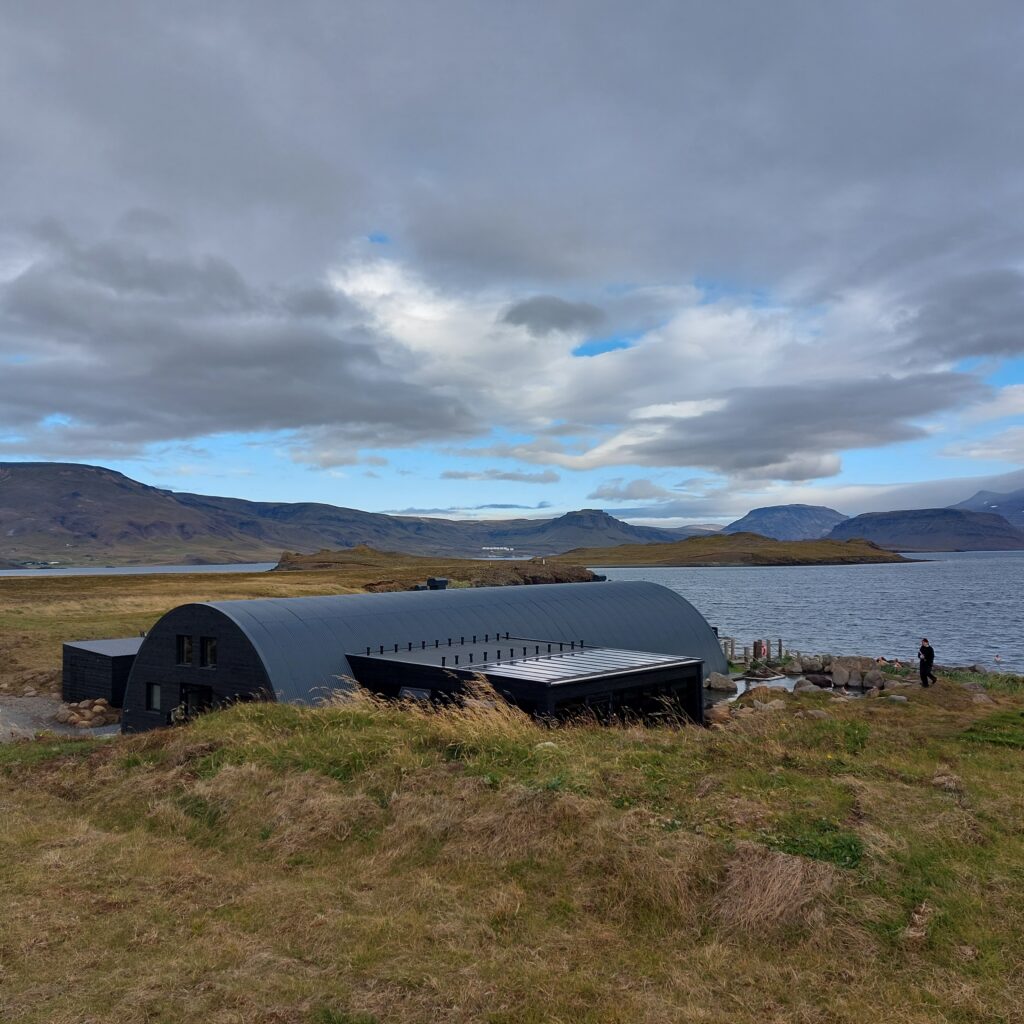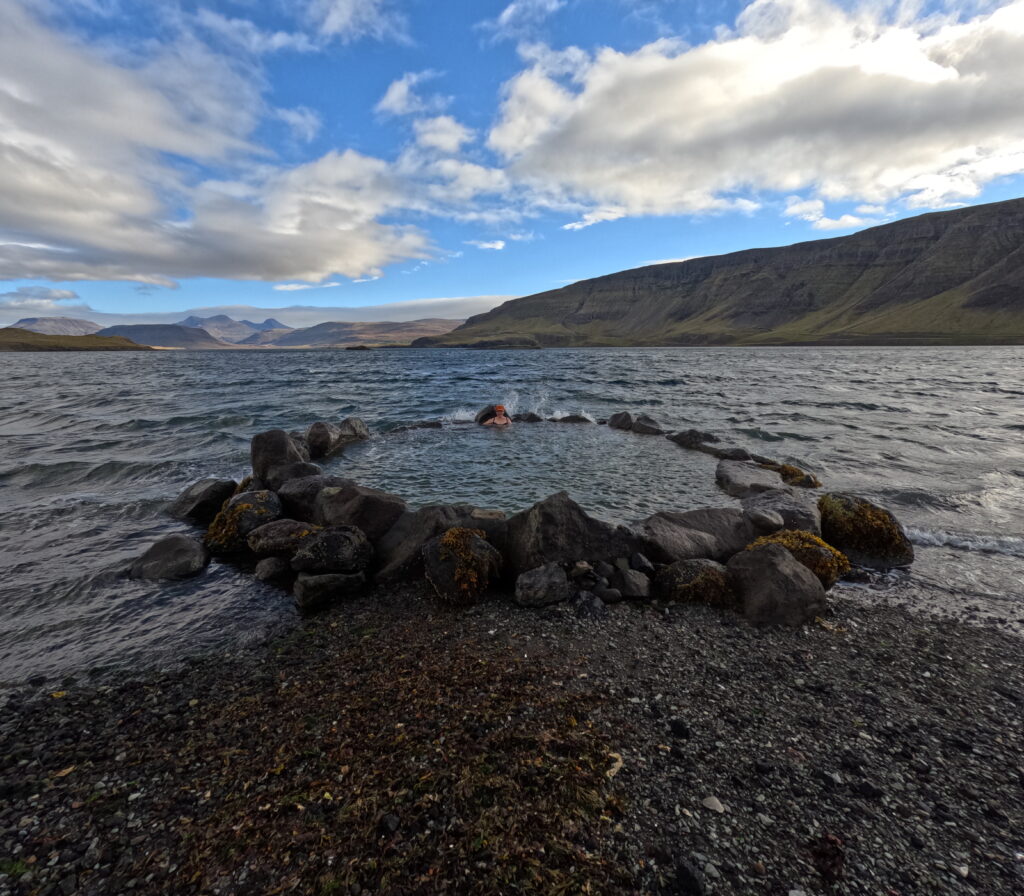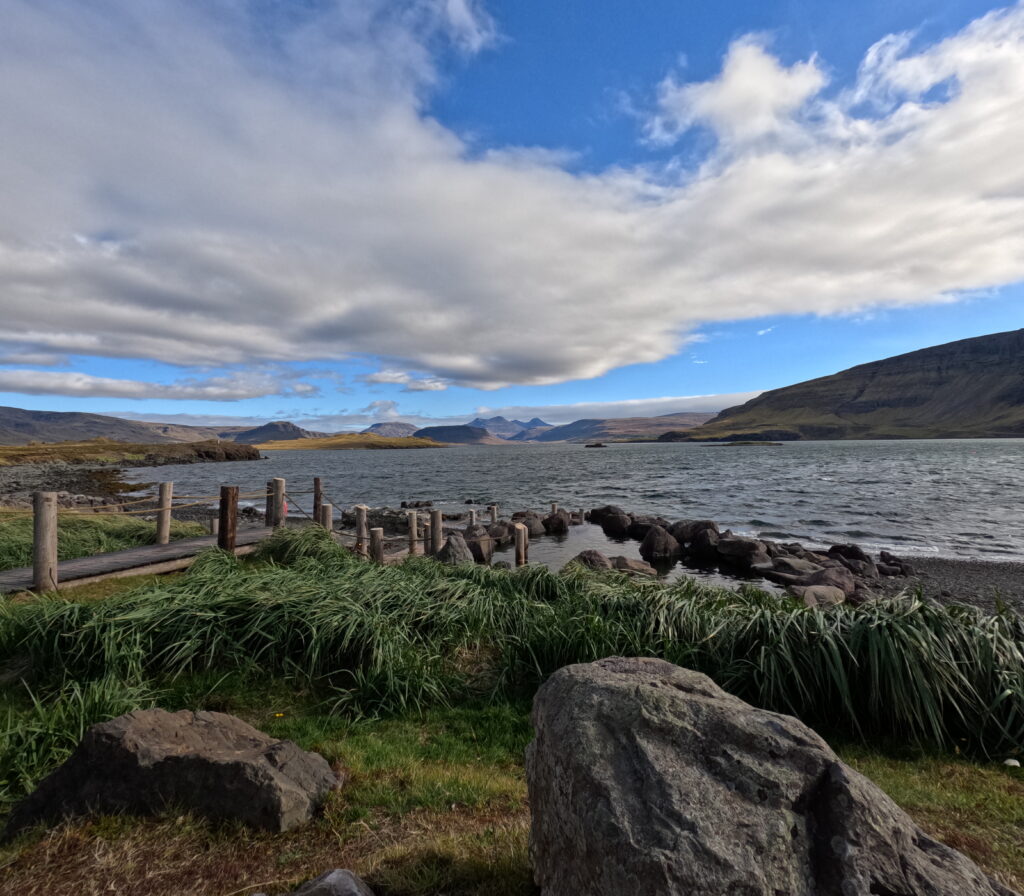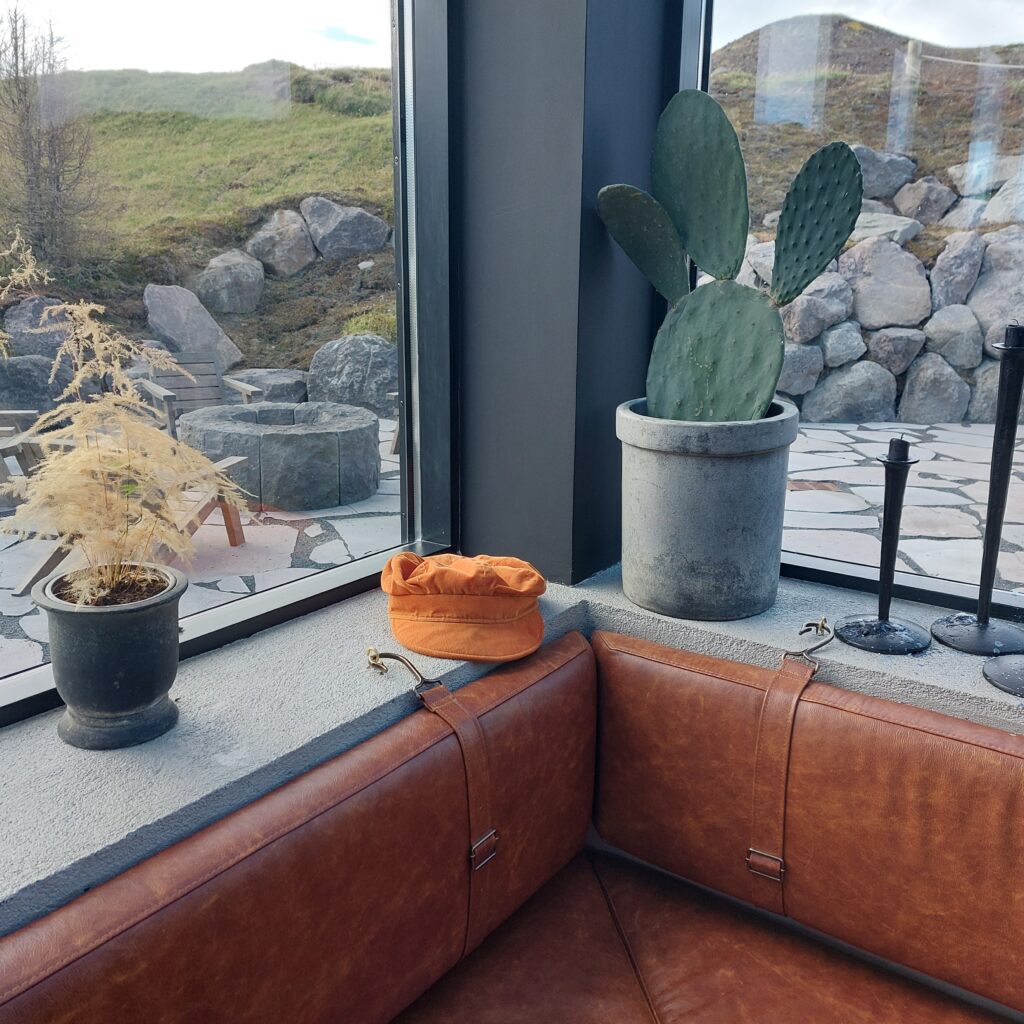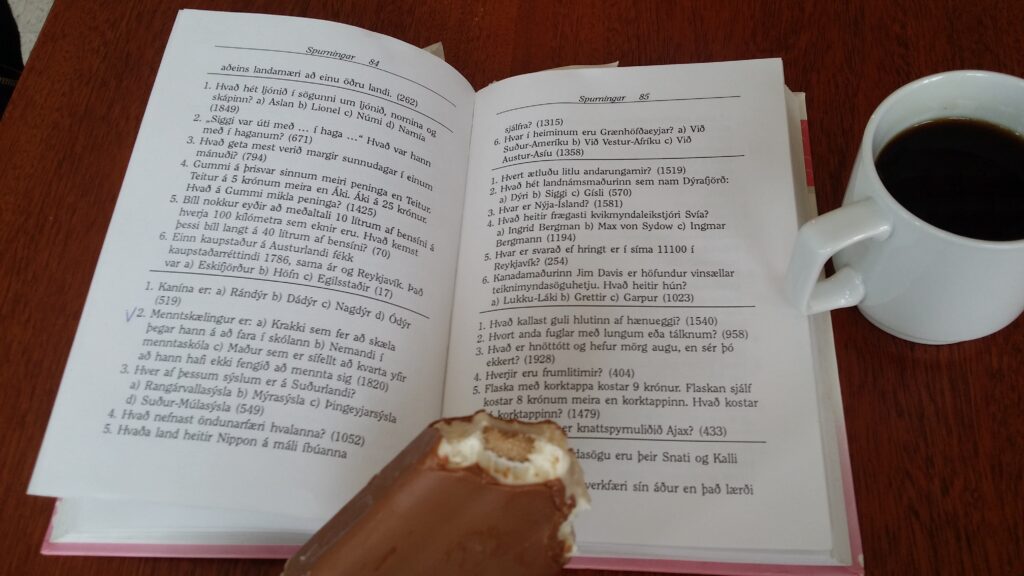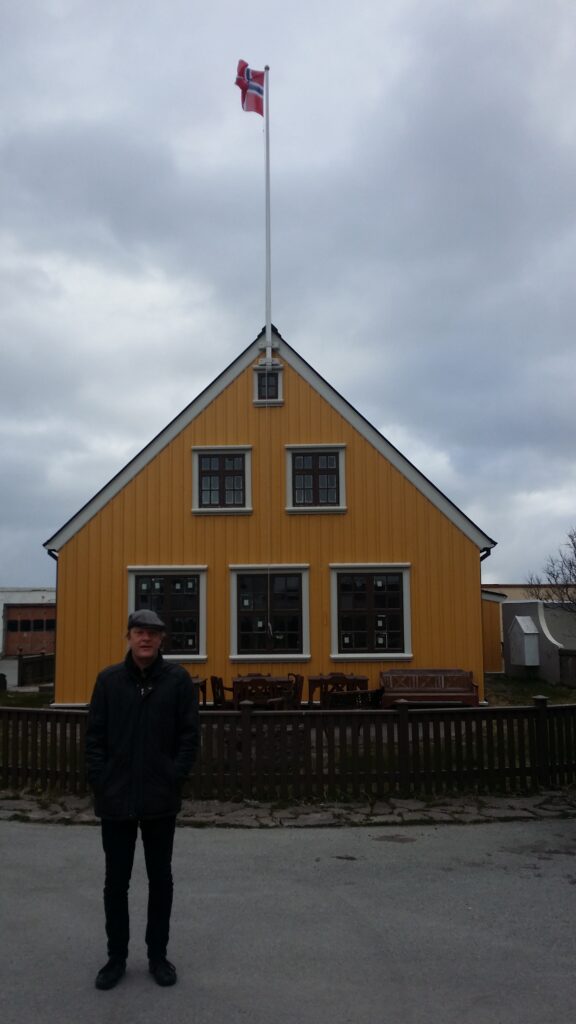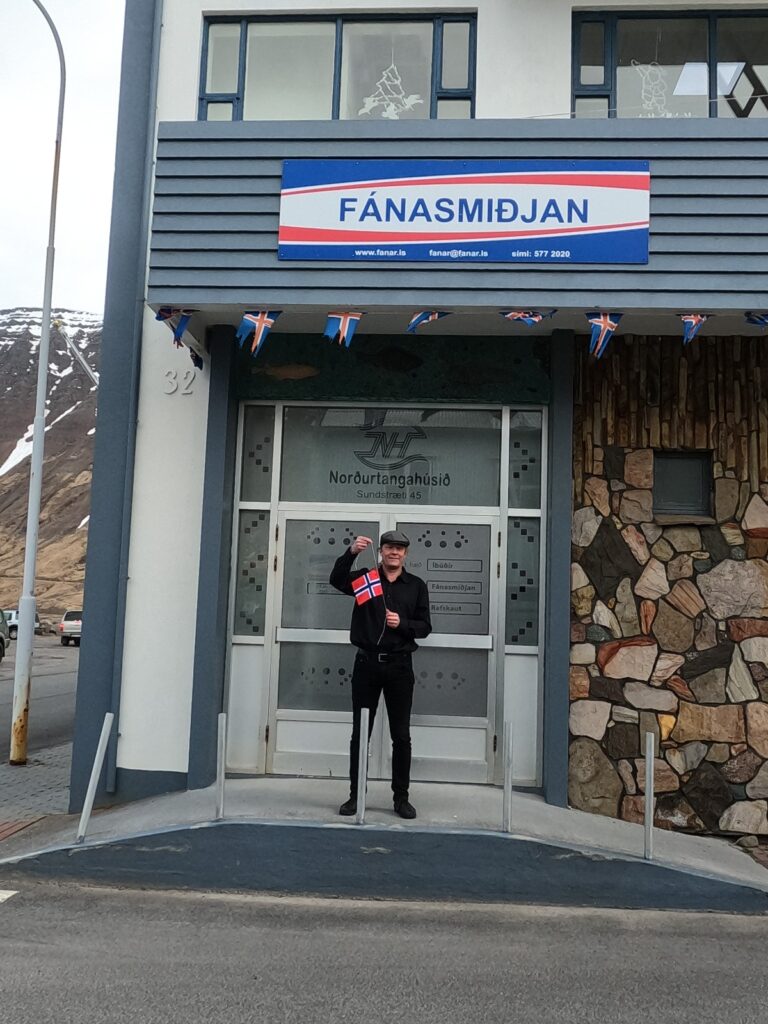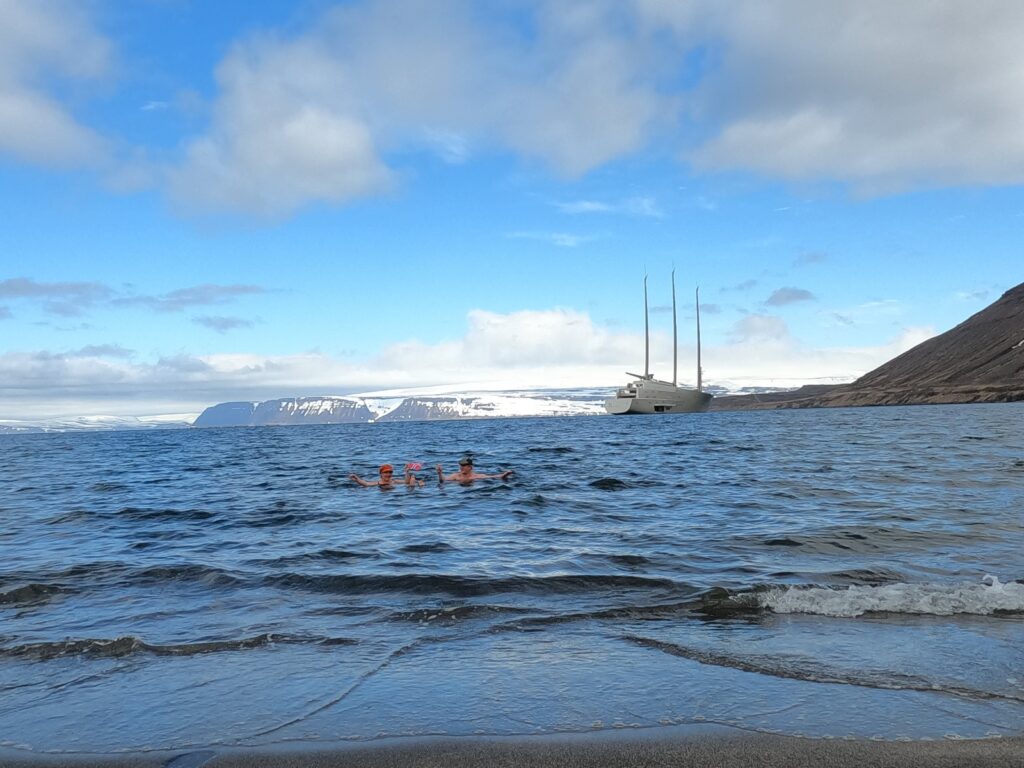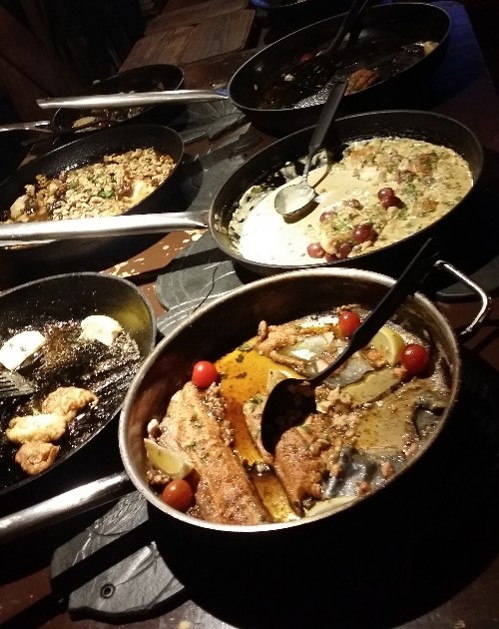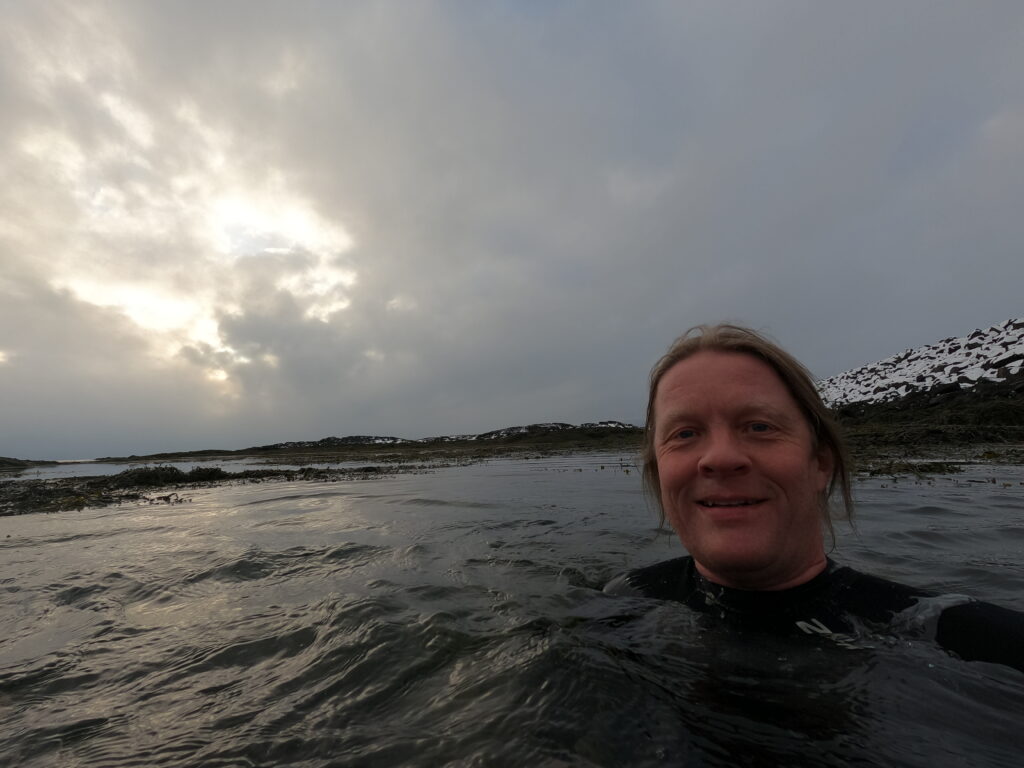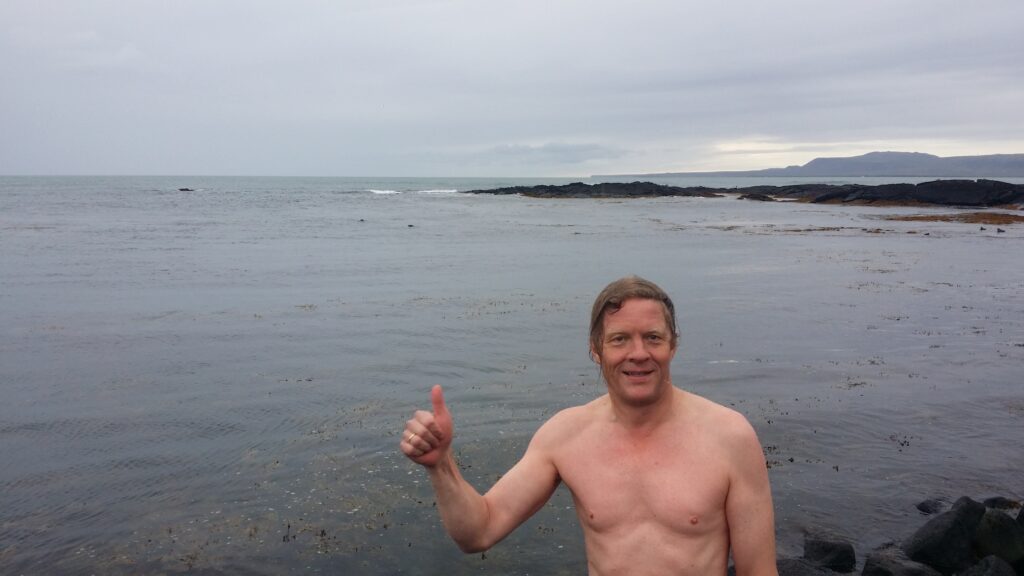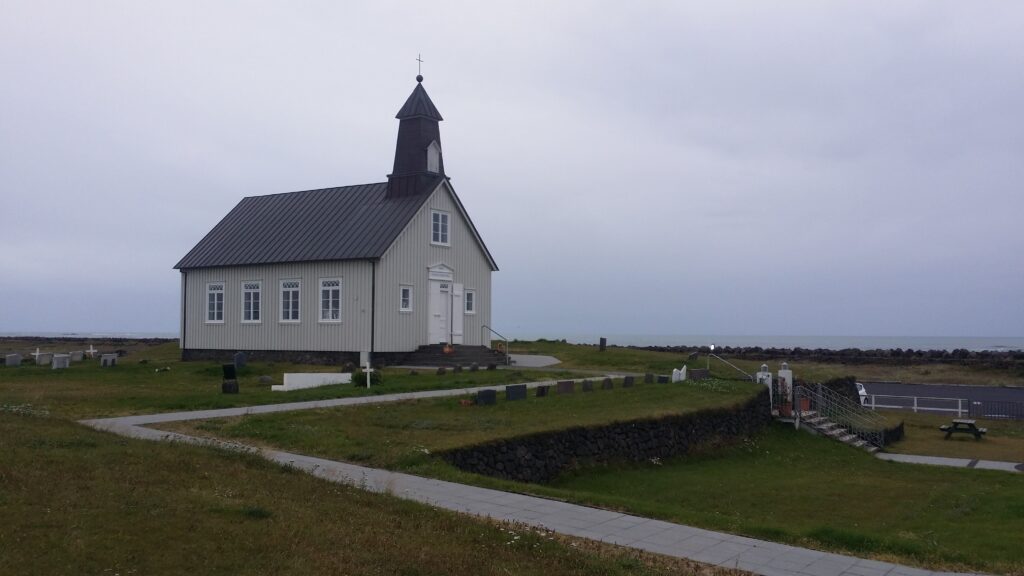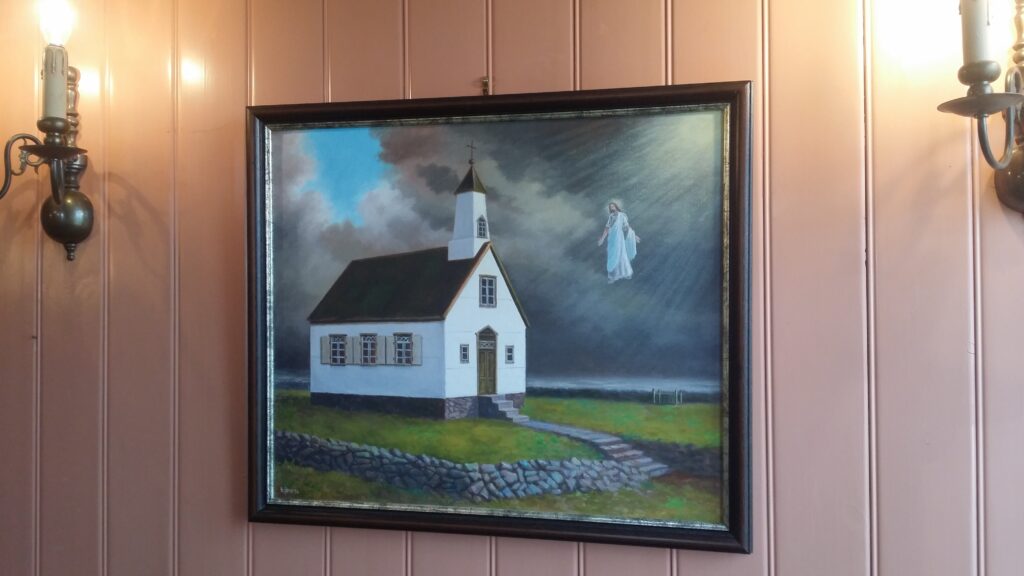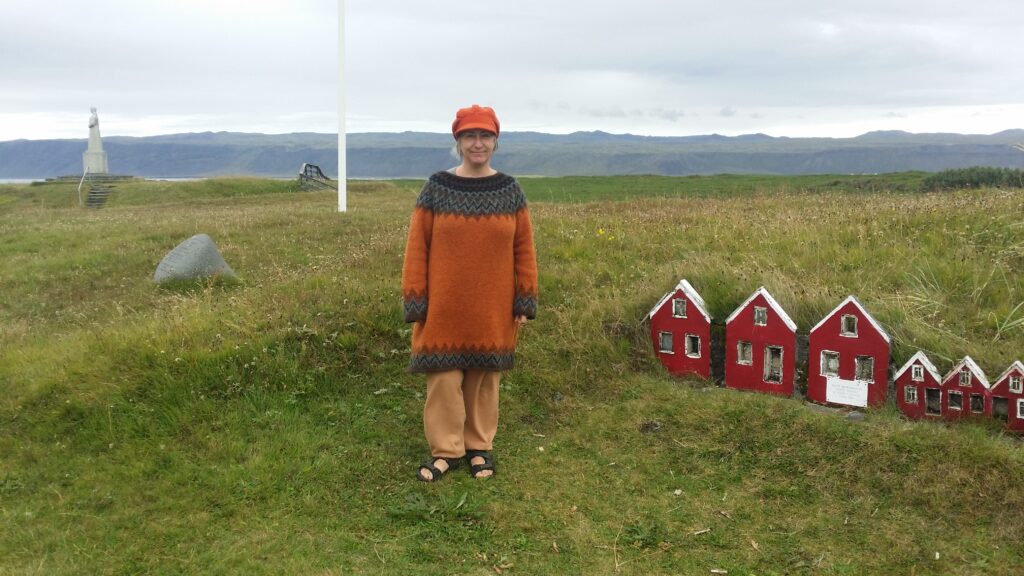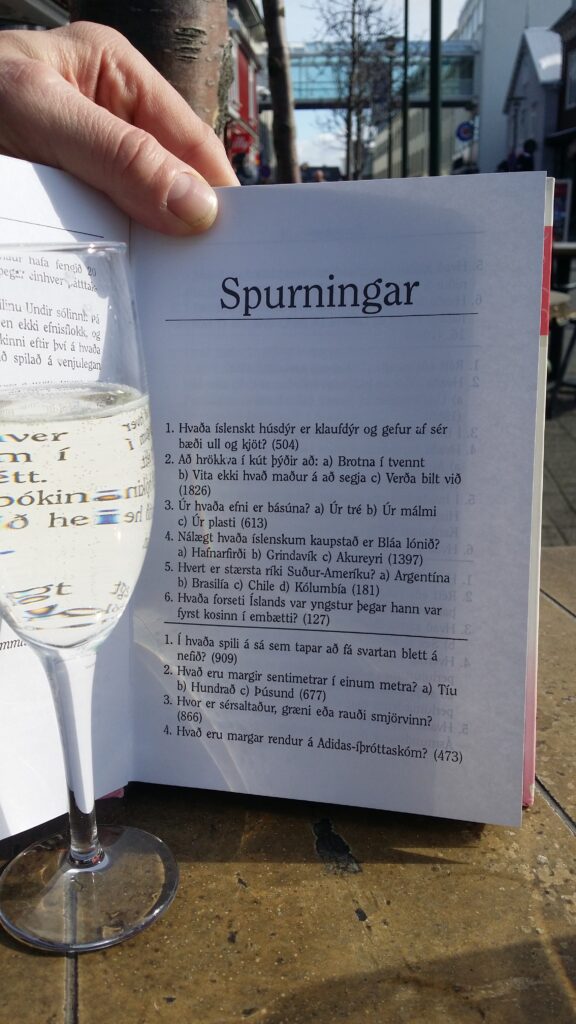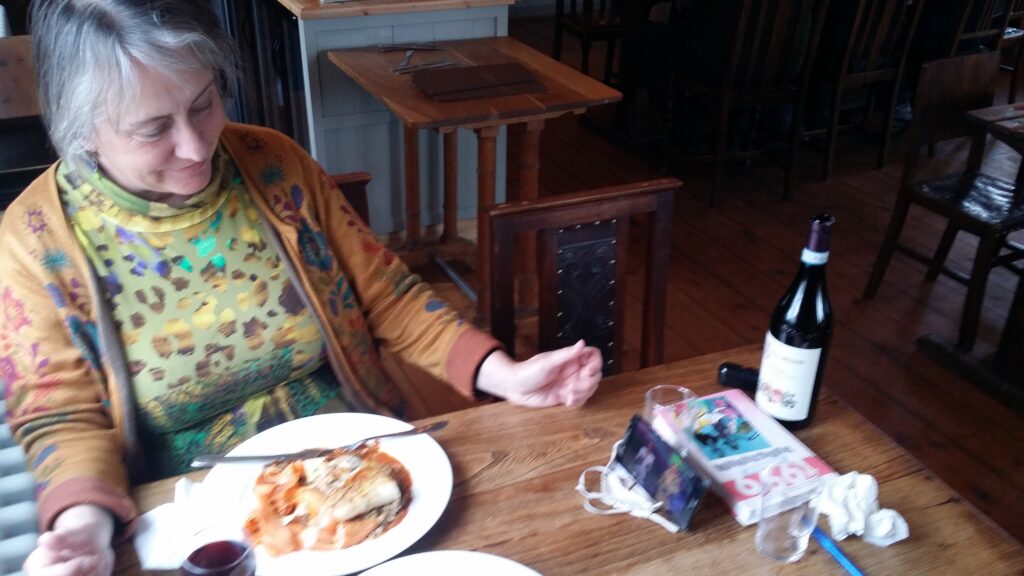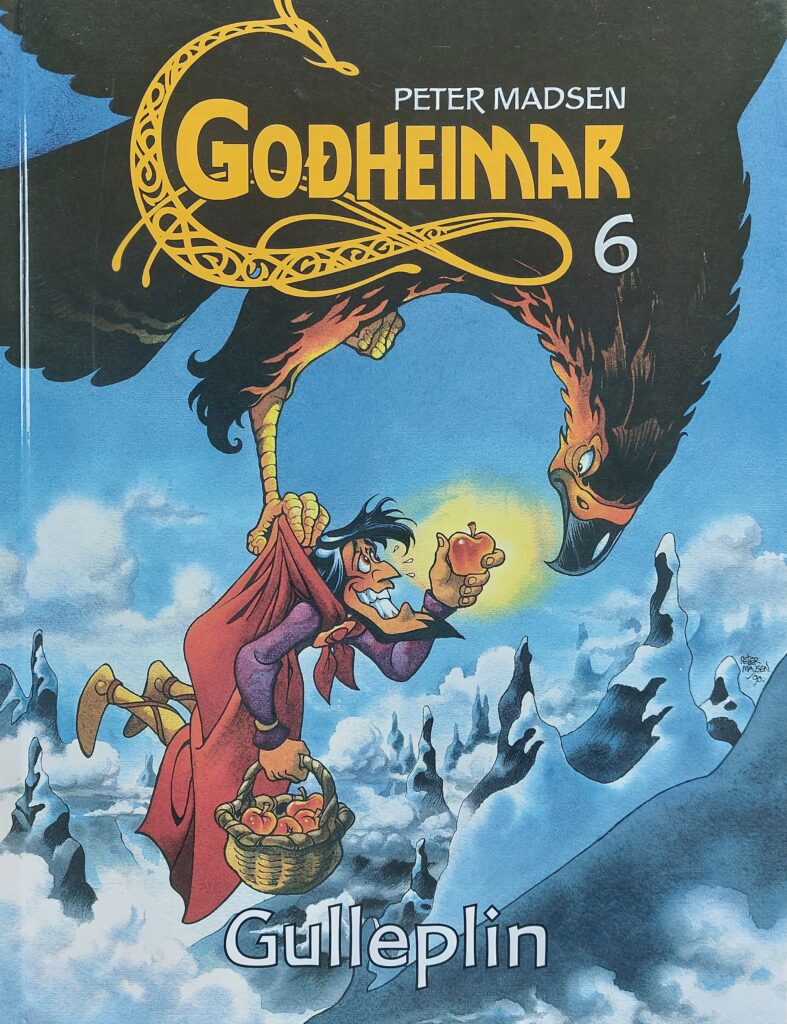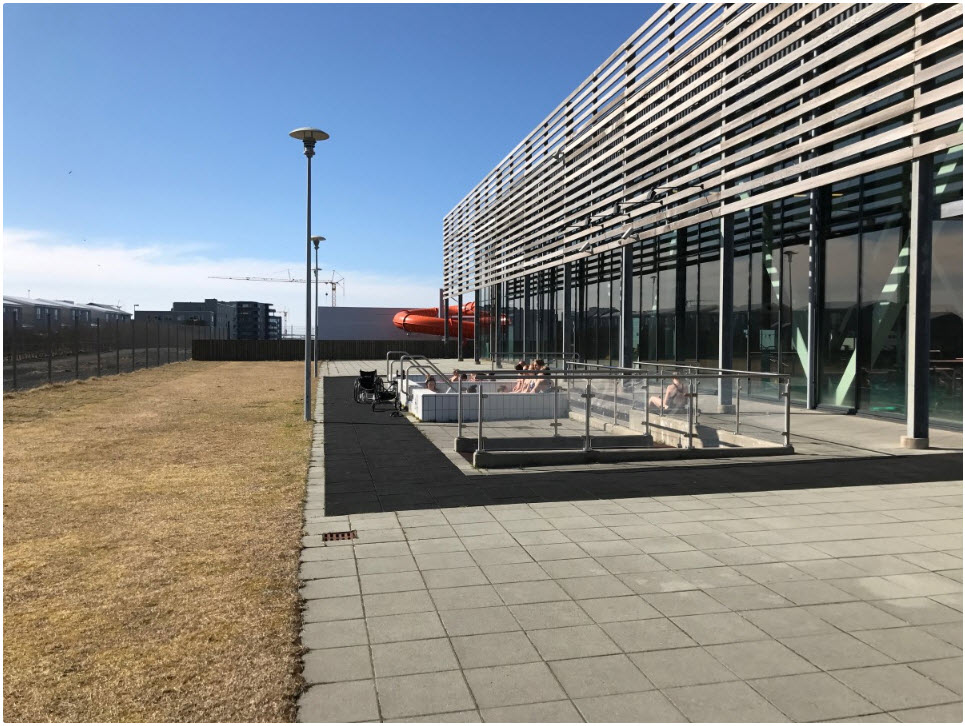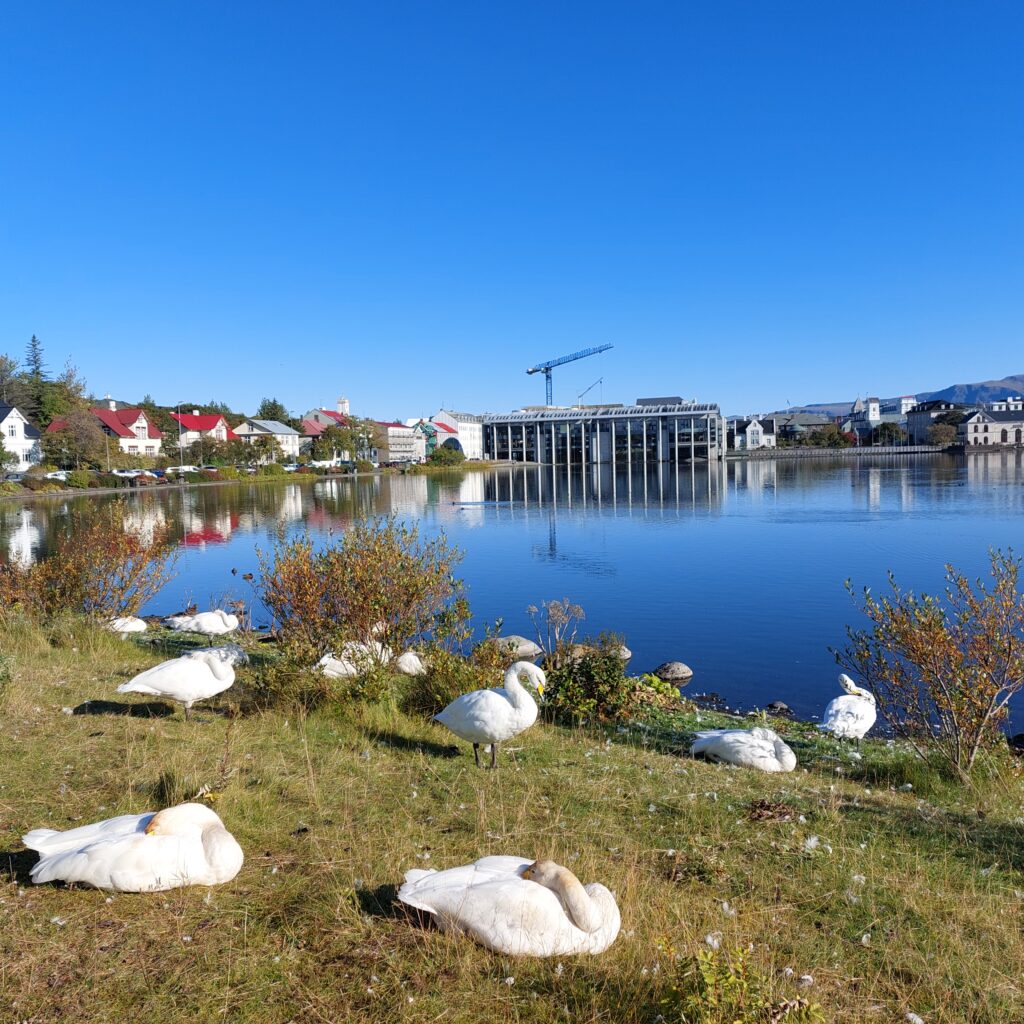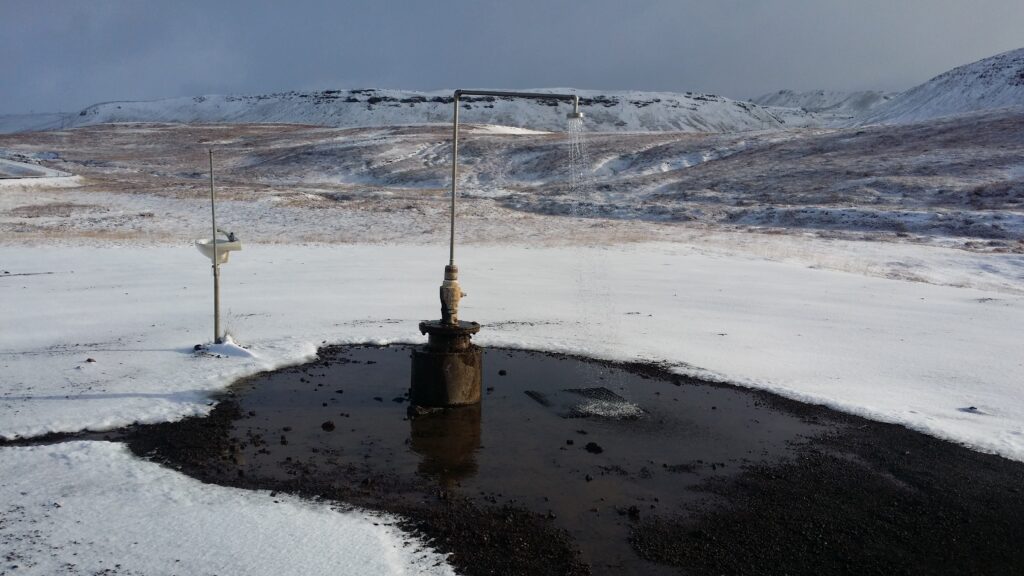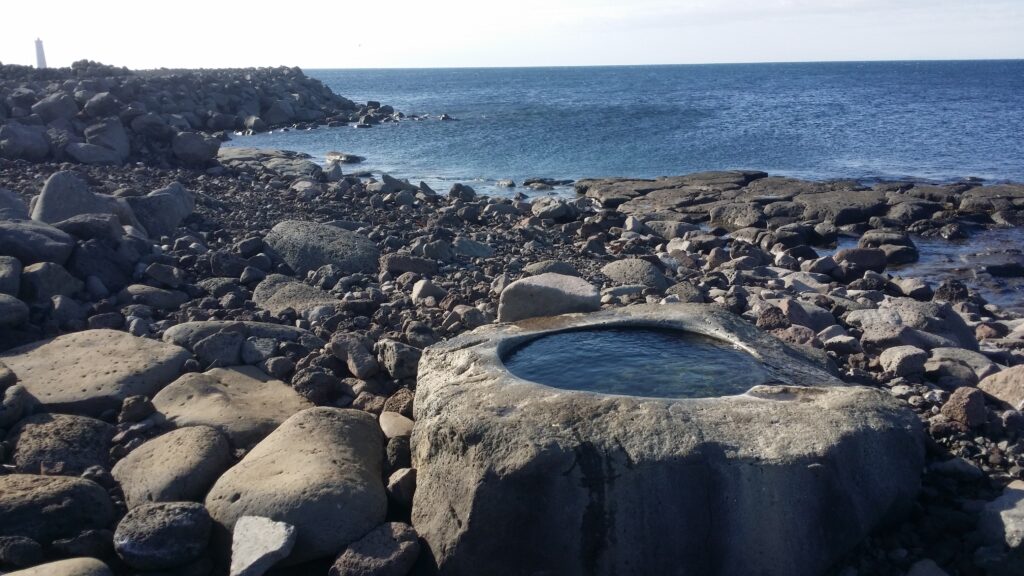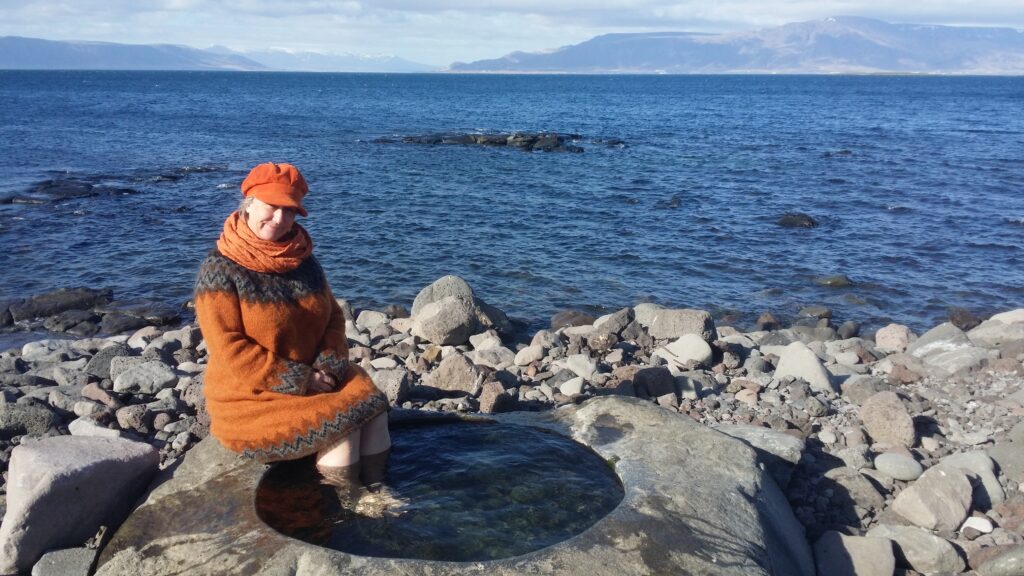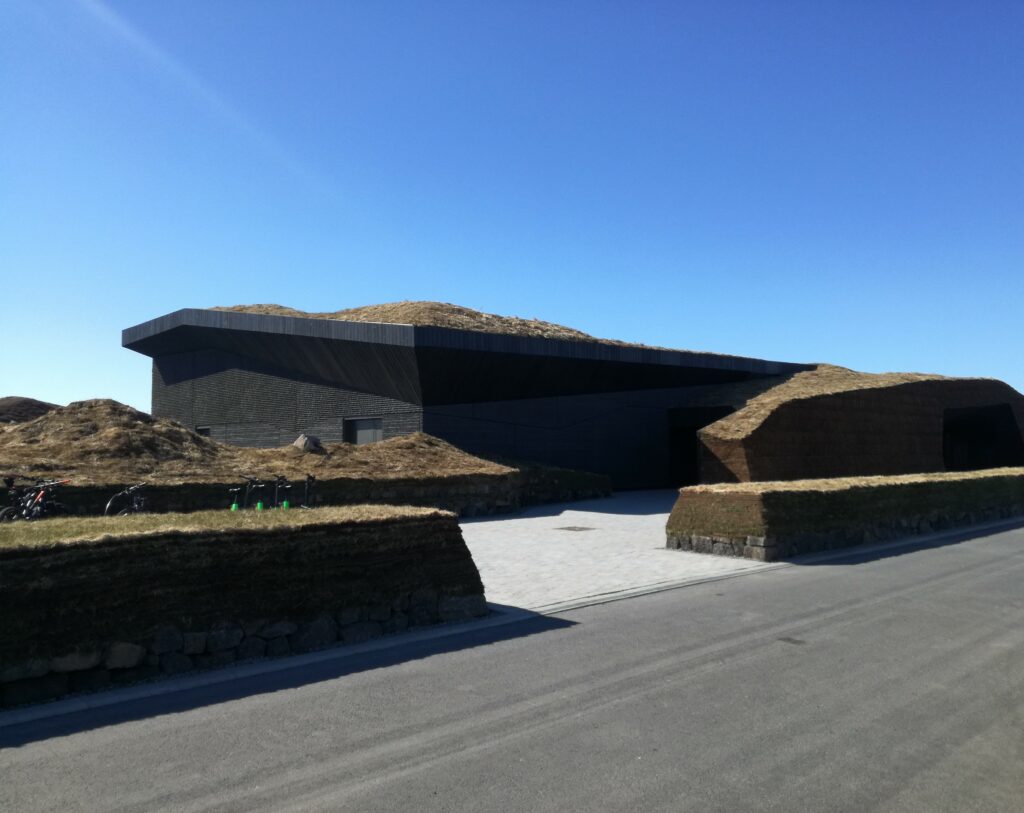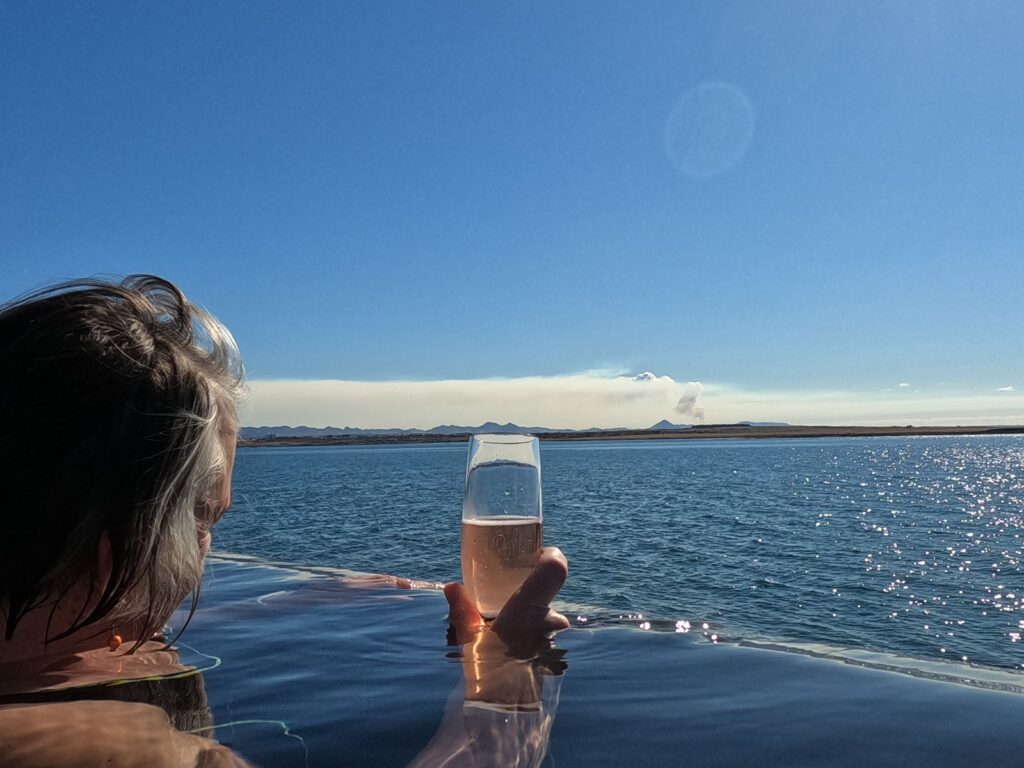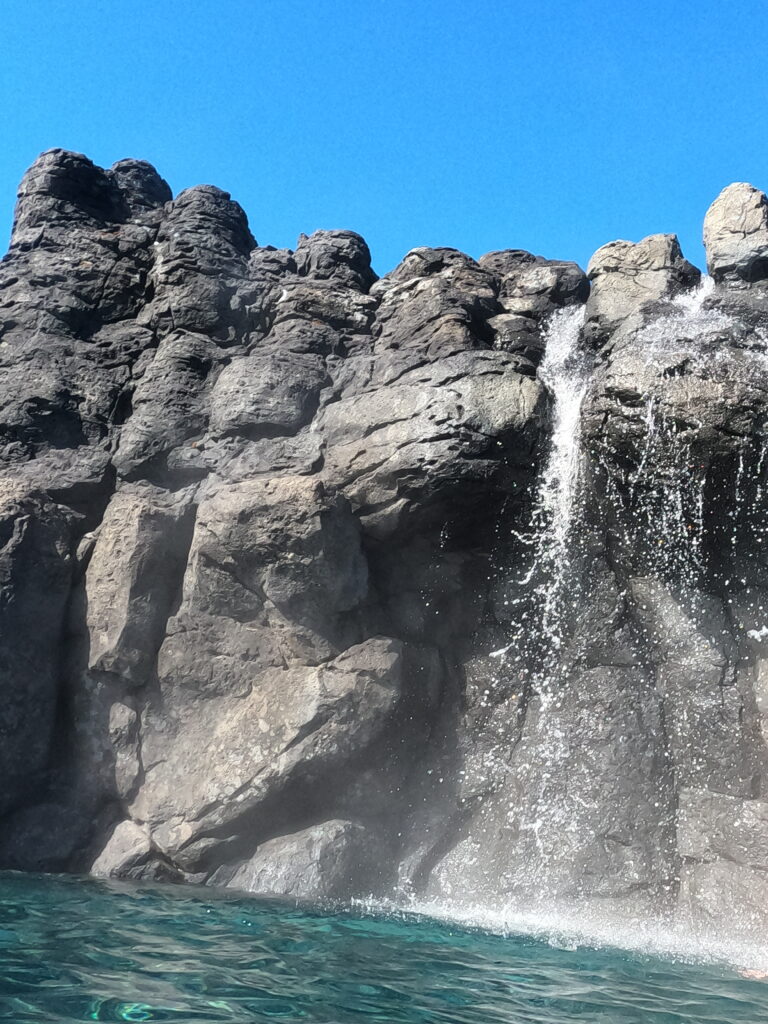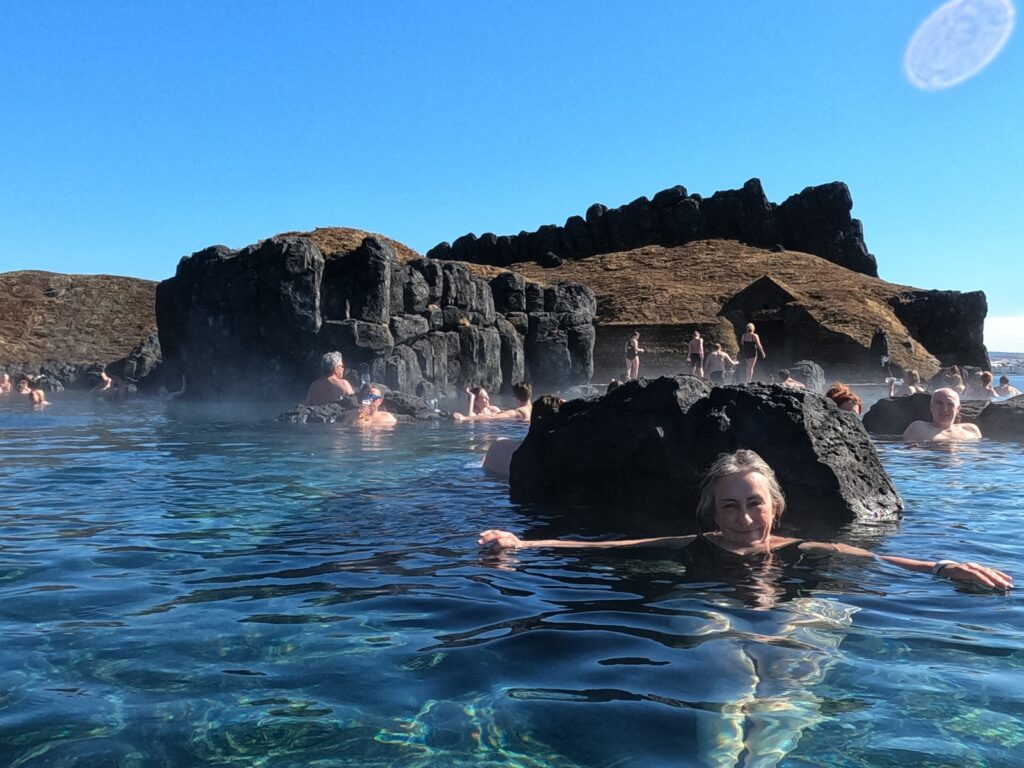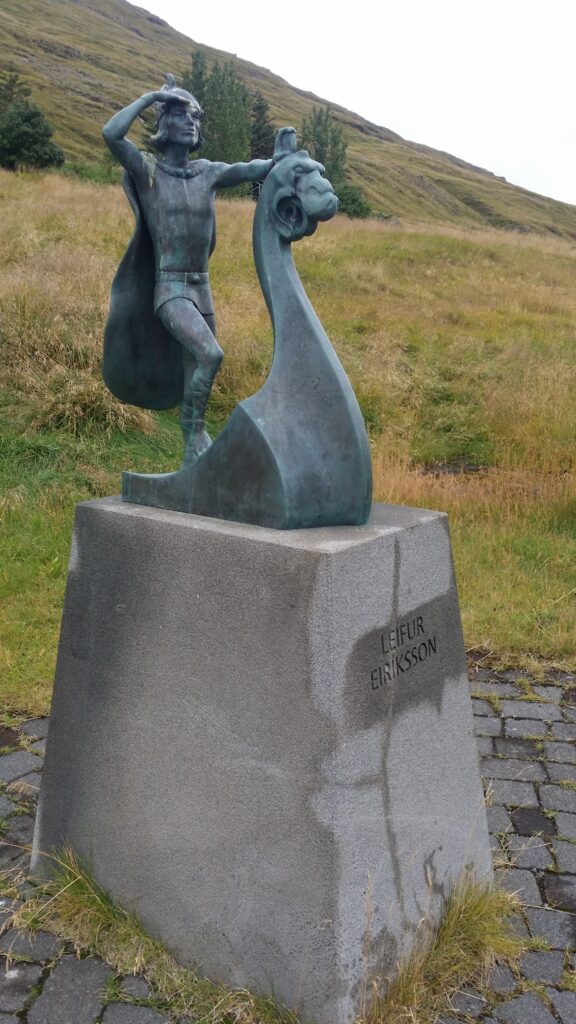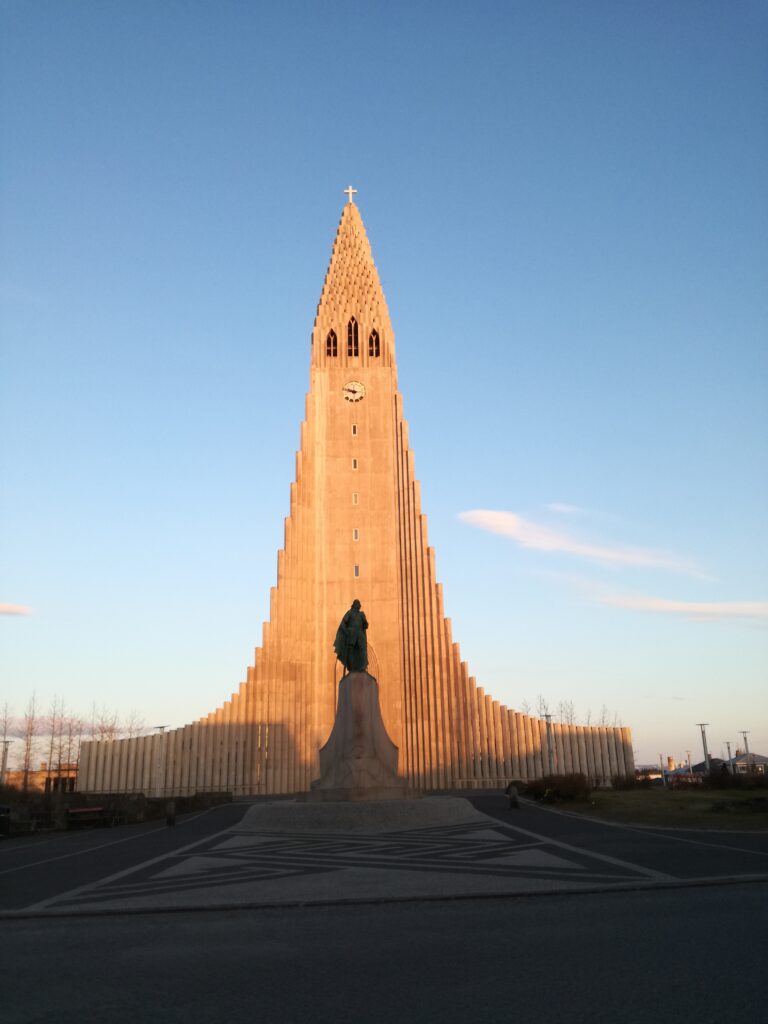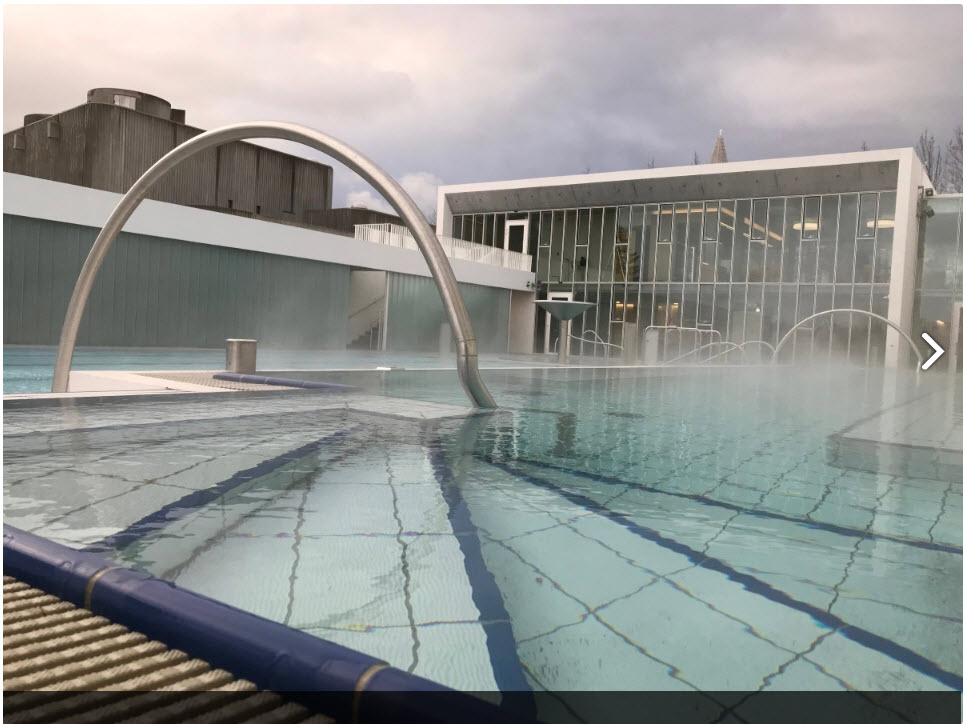We had read about an absolutely magical, blue volcanic lake called Víti (short form of Helvíti), and there we had to try to get a bath. Helvíti is a combination of the words hel (“realm of the dead”) and víti (“punishment” or “ban”). But things don’t always go as they should. A week ago, Iceland experienced the strongest storm in many, many years. We thought about going up in the mountains, but since there were danger warnings everywhere, we chose a lower route, and spent the night at Mývatn instead. That was a good choice! A lot of tourists chose wrong and became stuck in the storm. The cars were peppered with gravel and pebbles in the strong wind, and more than 70 cars had to be salvaged and/or abandoned at the small cafe Beitarhúsið. What a Hell!
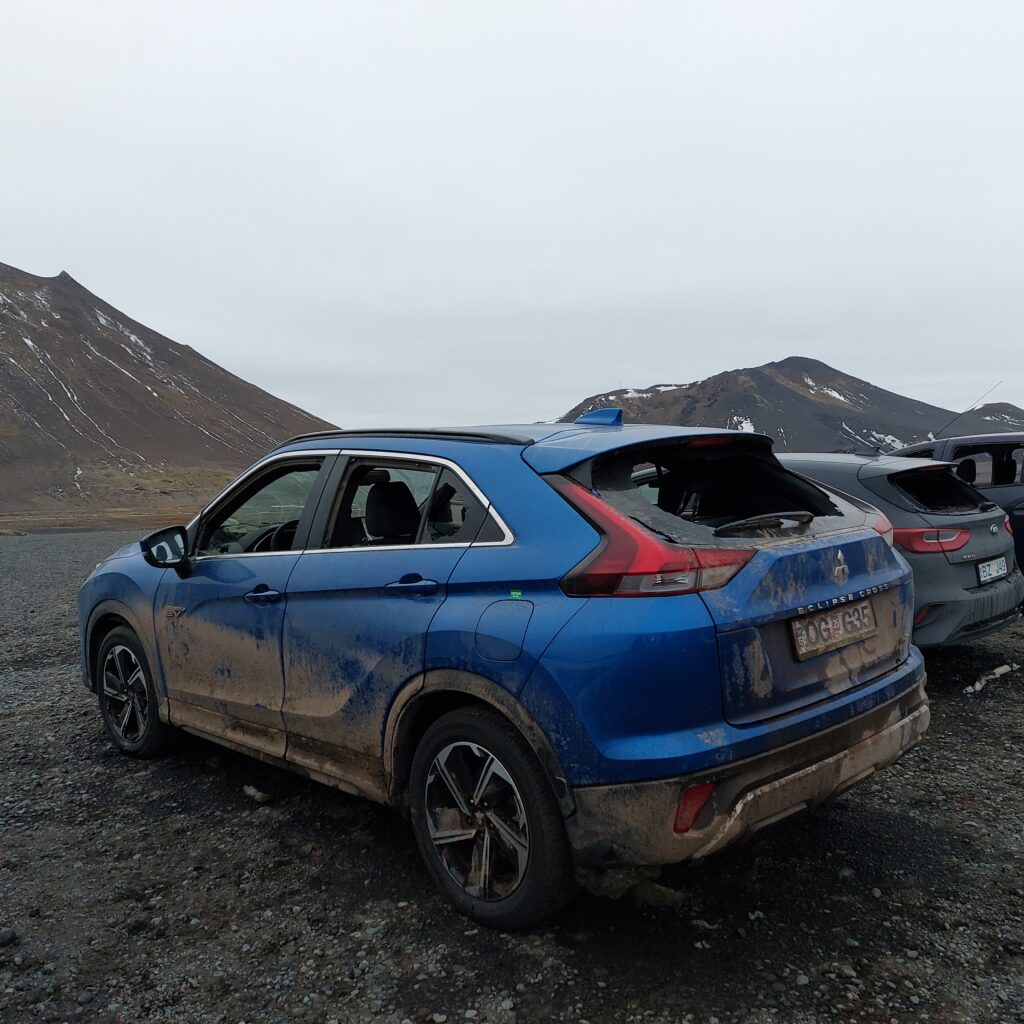
How lucky, that they could stay safe in the cafe, you might think, but it wasn’t that easy. We were there a couple of days later, and all of the windows had holes!
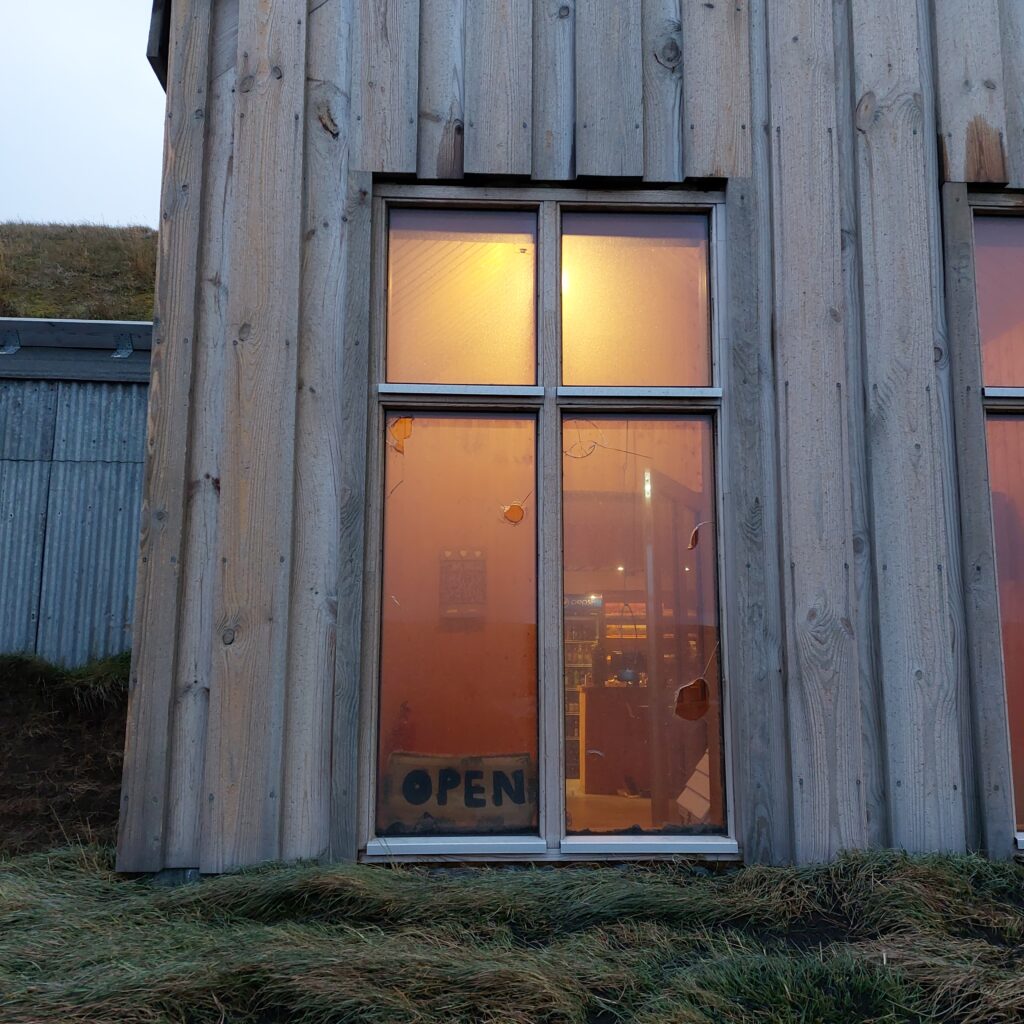
A couple of days later, however, it was just fun to drive over the mountain, and we arrived the Krafla area in the afternoon.
Just off the exit you’ll find Hverir, a sulphur-mud-steam-hell that you won’t forget unless you have a heavy flu (or COVID) upon arrival…
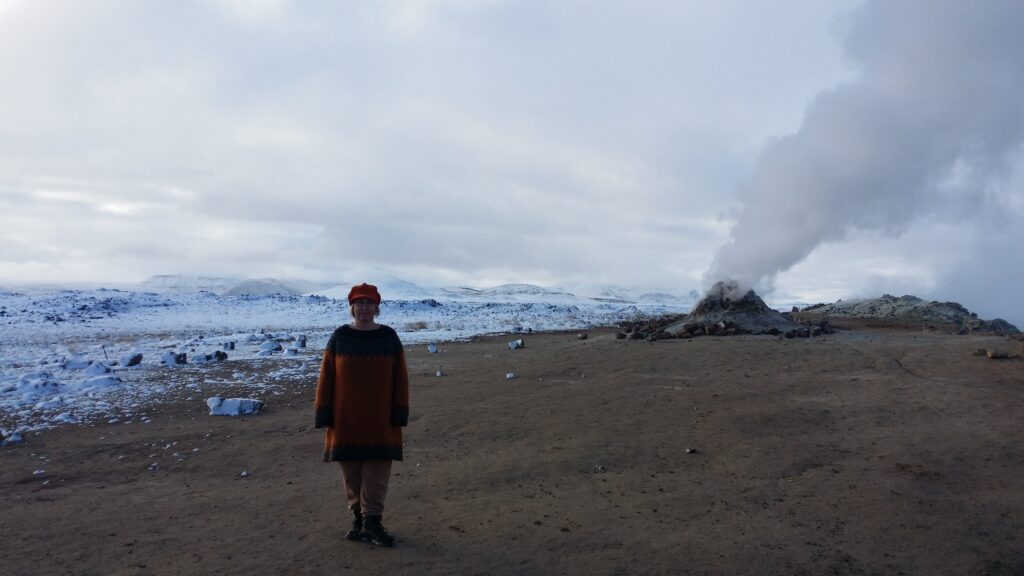
Krafla is the Mývatn area’s main volcano, and the highest peak is 818 m above sea level. The last eruptions were in 1975-1984. The heat at Krafla is used in a 60 MW geothermal power plant, Kröflustöð.
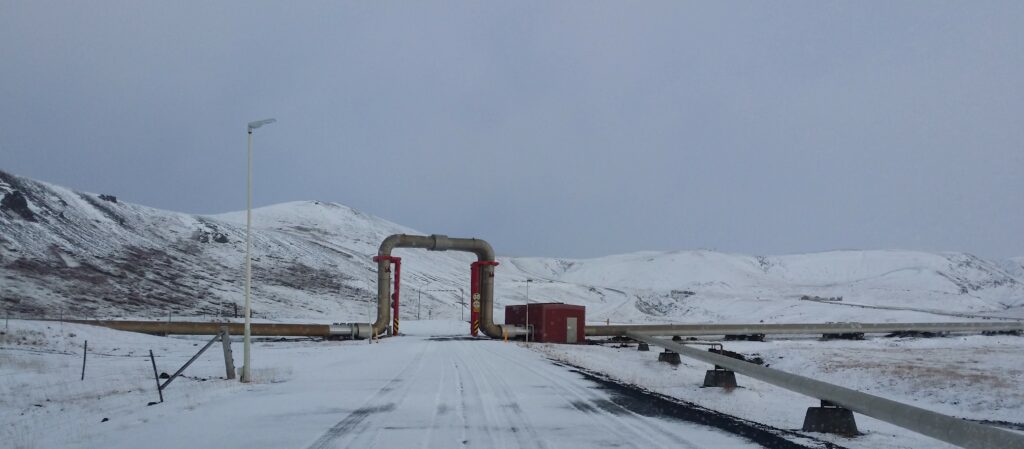
Before you arrive in Krafla, you are met by a hot shower in the middle of nowhere. Knut threw himself into it immediately. When entering any Icelandic bathing resort, you should ALWAYS shower and wash yourself first – without swimwear. So now Knut was ready for a bath in Hell.
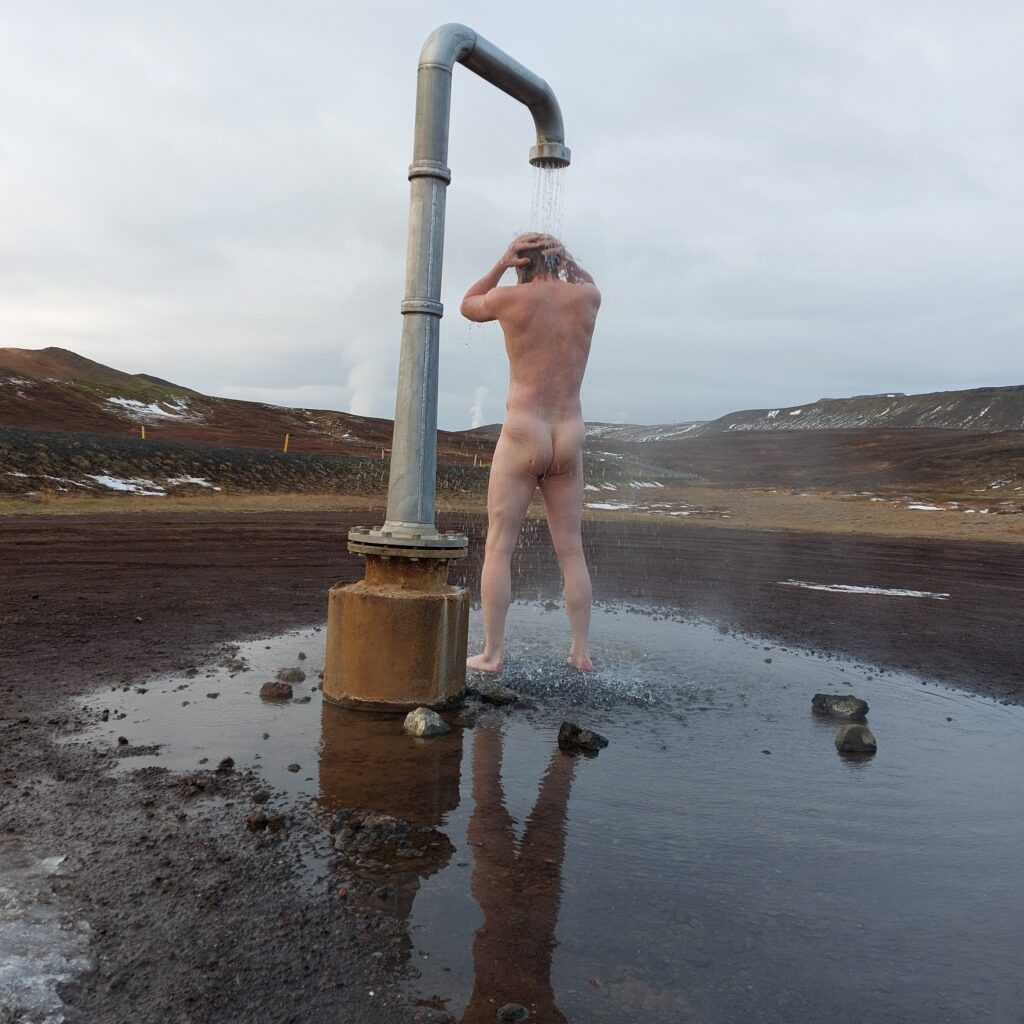
Then there was only Víti left. We have tried before, but had to drive backwards down again due to snow and summer tyres. This time we basically had no problems. And at least Knut had prepared by having a shower and everything.
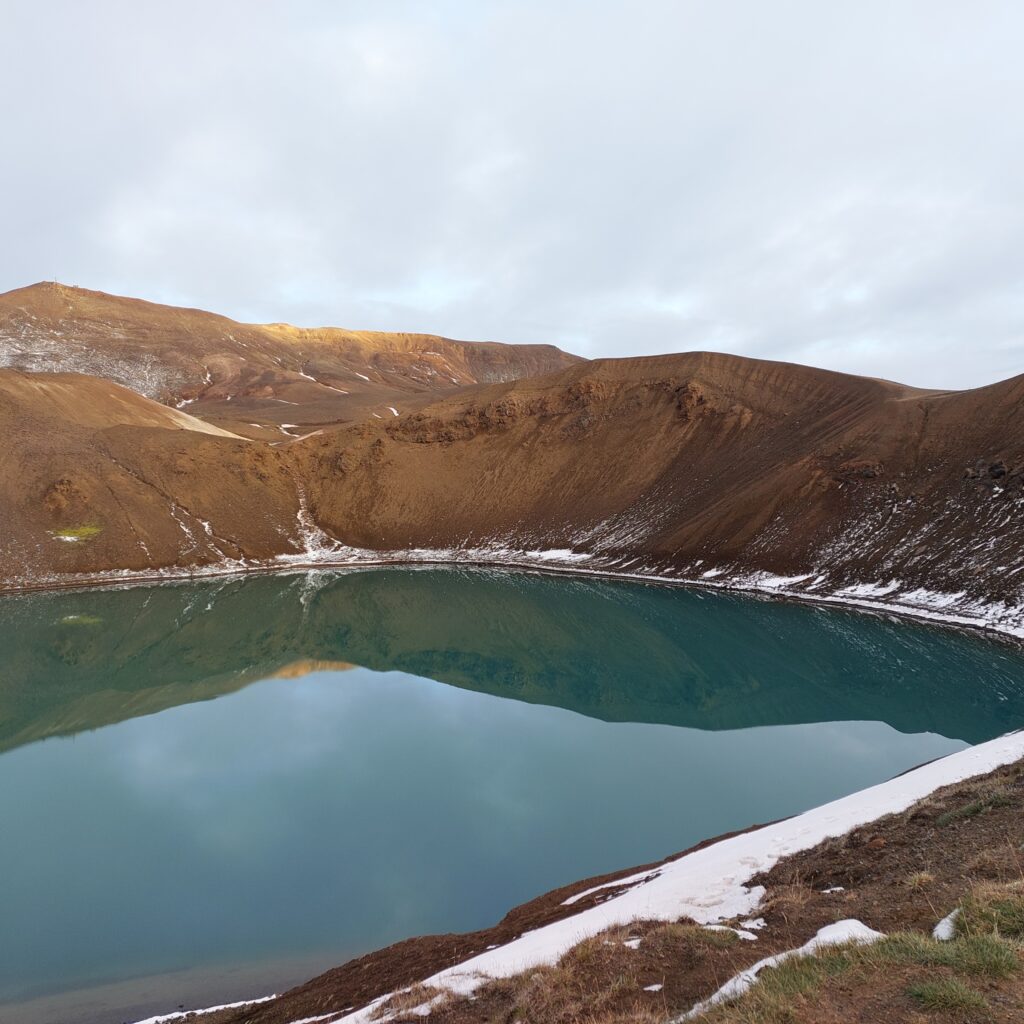
But it wasn’t that simple. Prohibited to go off the path? No path down to the water? It was very steep there. And snow…
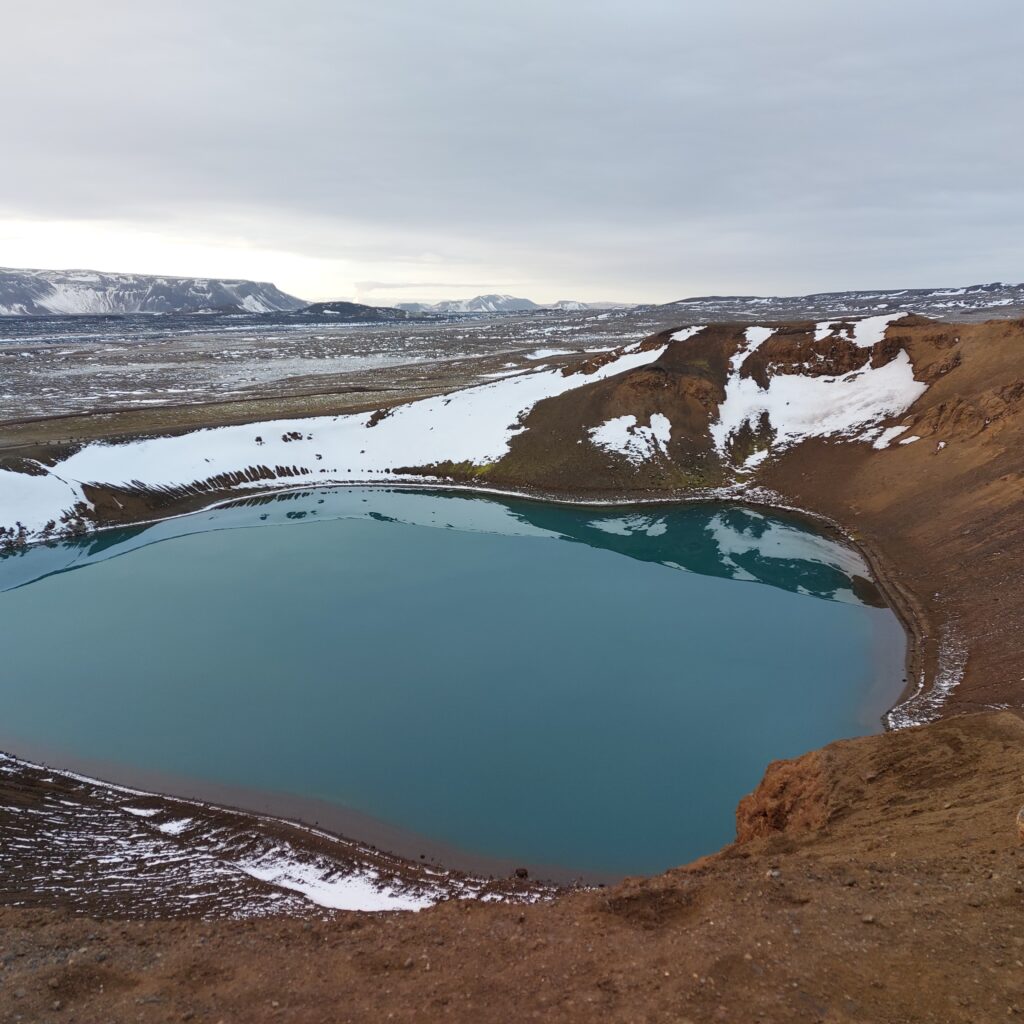
Víti became a ‘don’t’ bath. But now a few days have passed and we’ve got time to think it over a bit. And some Googling. It turns out we’ve been on the wrong Víti! The Víti that has 25 degrees Celcius water readily available is Askja-Víti, not Krafla-Víti. Sad to know, but that’s how it is. We won’t be able to visit Askja this year.
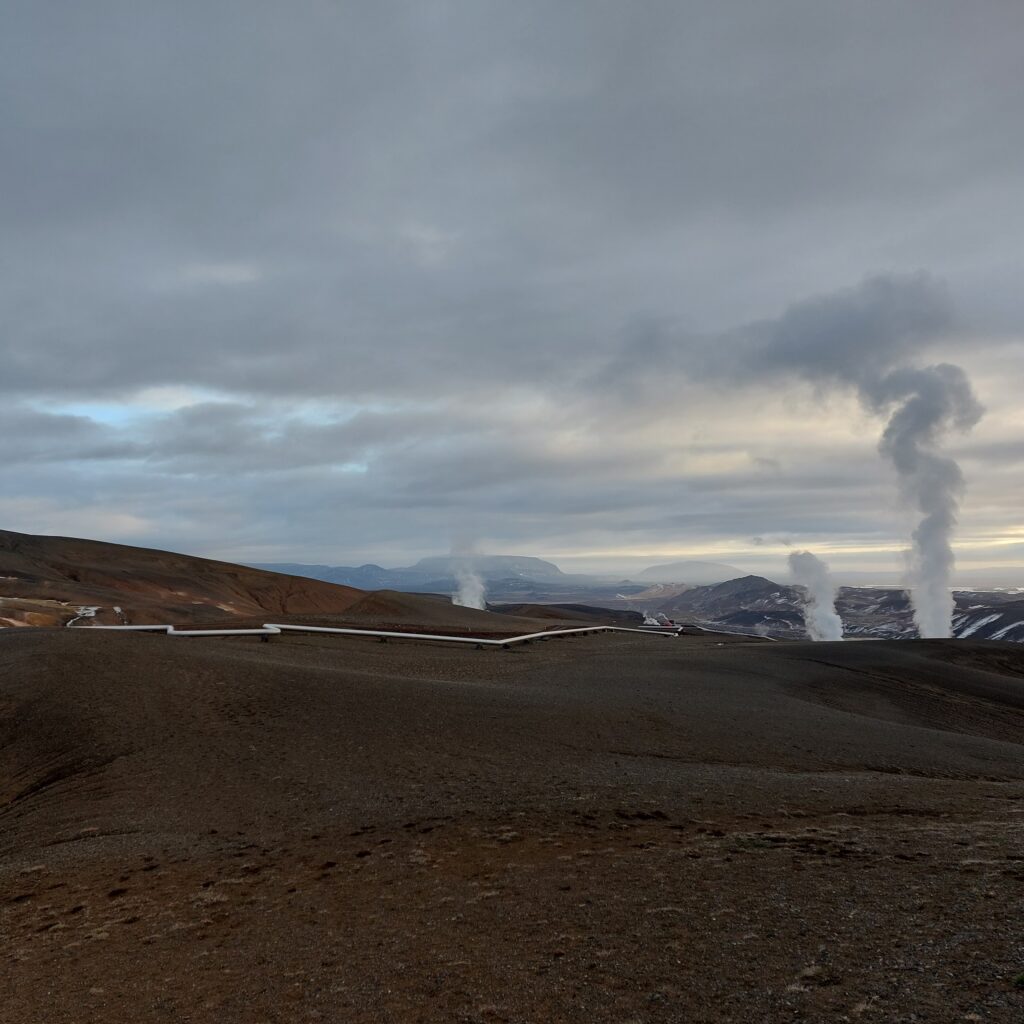
However, for a lady who has been doing piping design for approximately 10 years, it was beautiful to see the pipe stress loops at Krafla…
